2025















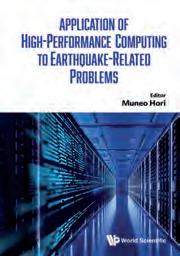
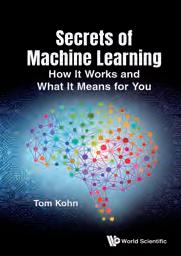
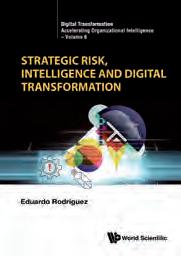
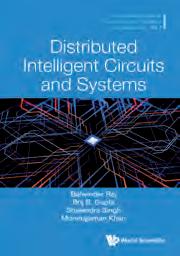
by Balwinder Raj (Dr B R Ambedkar National Institute of Technology, India)
Brij B Gupta (Asia University, Taiwan), Shalendra Singh (Pranveer Singh Institute of Technology, India) & Monirujjaman Khan (North South University, Bangladesh)

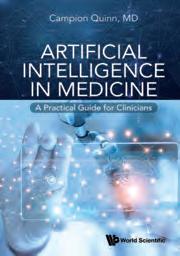





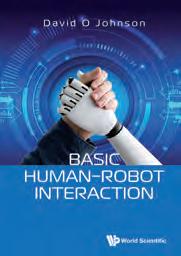
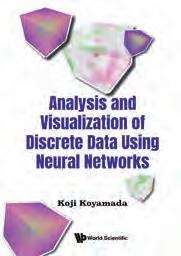
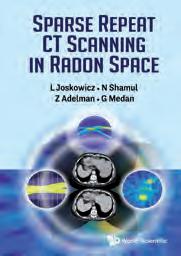
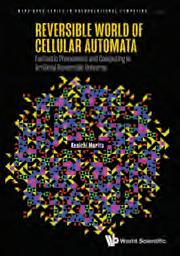
About World Scientific Publishing
World Scientific Publishing is a leading independent publisher of books and journals for the scholarly, research, professional and educational communities. The company publishes about 600 books annually and over 170 journals in various fields. World Scientific collaborates with prestigious organisations like the Nobel Foundation & US National Academies Press, amongst others, to bring high quality academic and professional content to researchers and academics worldwide. To find out more about World Scientific, visit www.worldscientific.com
Please contact our representatives and the World Scientific office nearest to you.

You can also order online at www.worldscientific.com or from your regular bookseller.
Textbook Inspection Copies
These are available upon request to lecturers for textbook adoption purposes. Please email us at sales@wspc.com or visit our website at www.worldscientific.com/page/inspection-copy
Interested in Writing a Book?


We would be delighted to hear from you if you have a book idea in mind. Contact any of our worldwide offices or email us at editor@worldscientific. com for more information. Alternatively, you can visit our website at www.worldscientific.com
Other Catalogues
We have produced these catalogues for the year 2025. Please email us at mkt@wspc.com to request for any of them.
• Asian Studies
• Business and Management
• Chemistry
• Civil Engineering
• Earth, Energy and Environmental Science
• Economics and Finance
• Electrical and Electronics Engineering
• Life Sciences
• Mathematics
• Materials Science and Nanoscience
• Mechanical Engineering
• Medical Sciences
• Nonlinear Science
• Physics
• Popular Science
Stay Updated

Join our Mailing List to be informed of our latest publications, worldwide conferences, special offers on our books and journals, and much more!

To join, visit https://wspc-newsletters.com/subscribe-iframe.php
Or email your contact information to us at mkt@wspc.com with “Computer Science” in the subject line.

over
subscribers who receive
Get alerted about:
•
•
•
•
•
•
Sign




An Evolved Neural Net Module Approach by Hugo de Garis (Xiamen University, China)
• The first artificial brain textbook in the world
• A step-by-step textbook, explaining how any computer research lab can also build artificial brains by following the techniques explained in the text
• Written in clear fluid prose by an experienced and previously published author
Readership: Undergraduate and graduate students in the field of artificial brain, artificial intelligence and robotics.
400pp Aug 2025
978-981-4304-27-6 US$95 £85
From Scratch to Productivity by Paul Alexander Bilokon (Thalesians Ltd, UK)
Written by a data scientist with decades of practical experience on some of the most challenging datasets, this book caters to both novices and professionals working in the fields of data science and machine learning. It enables novices to enter these fields with confidence and ease. There are no formal prerequisites. An introduction to Python is included. The book then proceeds to cover some of the language's most advanced features. The mathematical foundations that follow are meticulously explained. The discussion then proceeds to a practical consideration of data science and machine learning. The material is delivered through case studies developed on real datasets.
Readership: Aspiring Data Scientists and Machine Learning (ML) experts — undergraduate, graduate, and independent. Also applicable to Software developers, engineers, and others working in technical professions interested in learning about Data Science and Machine Learning; and Managers working in financial, technological, and medical organisations, interested in learning about Data Science and Machine Learning.
300pp Jan 2025
978-981-121-572-8
US$98 £90
978-981-121-573-5(ebook) US$157 £145
by Verena Hafner (Humboldt University Berlin, Germany) & Guido Schillaci
Recent advances in robotics and artificial intelligence enabled robots to not merely be programmed for a specific task, but adapt to their environment and own body autonomously. The inspiration for this openended development and learning comes from findings in developmental psychology on sensorimotor and social learning. Developing a sense of Self and a sense of agency is a crucial milestone towards autonomy and cognitive and social skills in both natural and artificial systems.
By exploring and interacting with their surroundings, infants learn about their bodily capabilities and develop a sense of their body as an entity differentiated from the environment and that they can control. Neuroscientists identified a set of brain regions that would be involved in this subjective experience, and hypothesized on a range of processes that would produce it. This book will explain the development of the self and self-agency in humans, and discuss what could be transferred to artificial systems. The state of the art of research in developmental robotics related to the self will be illustrated with many examples.
Readership: Researchers and graduate students in the fields of Computer Science & AI, Cognitive Science, Developmental Robotics, and Developmental Psychology.
200pp Feb 2025
978-981-128-330-7 US$88 £80
978-981-128-331-4(ebook) US$141 £130
World Scientific Series on Future Computing Paradigms and Applications VISUAL QUALITY
ENHANCEMENT FOR
by Surya Prakash (Indian Institute of Technology Indore, India) & Piyush Joshi (Indian Institute of Information Technology, India)
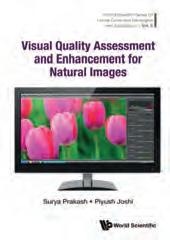
This book covers different quality assessment techniques for natural images. It further discusses image enhancement techniques that are based on estimated quality. This book presents image quality assessment techniques for different distortions, such as poor contrast, poor illumination, noise and artifacts in deblocked images. Also presented are quality-aware techniques for image enhancement for different distortions.
Readership: Advanced undergraduate and graduate students, and researchers specialising in Artificial Intelligence, Computer Vision, Pattern Recognition and Image Analysis; practitioners in the fields of Image processing, Computer vision and Image quality assessment; technologists in the digital media industry.
300pp Mar 2025
978-981-125-728-5 US$78 £70
978-981-125-729-2(ebook) US$125 £115
edited by Edward Raff (Booz Allen Hamilton, USA) & Charles K Nicholas (University of Maryland, Baltimore County, USA)
This comprehensive collection guides ML practitioners and researchers into the state-of-the-art and underlying insights needed to work in and research problems at the intersection of machine learning and cyber security, particularly around the problem of malware targeting the Windows platform.
Readership: Researchers, professionals, academics, and graduate students in AI, machine learning and digital security.
450pp Jan 2025
978-981-126-203-6 US$148 £135
978-981-126-204-3(ebook) US$237 £220
Theoretical Insights into an Artificial Mind by Shlomo Dubnov (University of California, San Diego, USA) & Dongmian Zou (Duke Kunshan University, China)
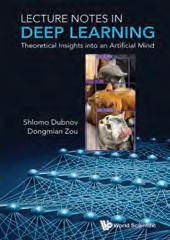
The compendium provides an introduction to the theory of deep learning, from basic principles of neural network modeling and optimization to more advanced topics of neural networks as Gaussian processes, neural tangent and information theory. This unique reference text complements a largely missing theoretical introduction to neural networks without being overwhelmingly technical in a level accessible to upper-level undergraduate engineering students.
Readership: Researchers, professionals, academics, and undergraduate and graduate students in artificial intelligence and data bases/info science.
230pp Jan 2025
978-981-128-157-0(pbk) US$48 £45
978-981-128-062-7 US$88 £80
978-981-128-063-4(ebook) US$141 £130


Series on Intelligence Science - Vol 5
Humans and Machines
by Juyang Weng (Brain-Mind Institute, USA)

The volume explains how human brains require and learn consciousness and why the new AI will overcome the current lack of conscious learning algorithms in AI. For human societies, it suggests how governments can make their taxpayers safer, more prosper and happier. For future AI, it calls for a thorough investigation in scientific infrastructures like government and private funding agencies, publication venues, professional societies and administrators that evaluate research. Why did a conscious learning algorithm not have a healthy environment to study? Why could rampant misconducts of data deletion in deep learning be allowed to grossly exaggerate AI performances for so long? The author’s real-life accounts reveal deep reasons.
Readership: Researchers, professionals, academics, undergraduate and graduate students in AI and robotics.
200pp Feb 2025
978-981-126-439-9 US$58 £55
978-981-126-440-5(ebook) US$98 £90
by Eugene Golikov (École Polytechnique
Fédérale de
Lausanne, Switzerland)

While the field of Deep Learning has been advancing at frightening speeds during the last ten years, we do not have a plausible theoretical explanation of its success yet. One can safely say that Deep Learning works, but nobody really understands why. Nevertheless, starting around five years before now, a decent number of theoretical papers specifically concerning neural nets started to emerge at top machine learning venues. This makes us think that the core of Deep Learning theory has already started to crystallize.
The goal of the present book is to present these core concepts of Deep Learning theory to readers so that they could directly dive into recent papers of this area. For this purpose, each chapter elaborates a simple model or a classical result in details first and then discusses possible generalizations and more recent developments of the same idea.
We have to warn the reader that the present book is not a mathematical manuscript. Not all results here are stated as formal theorems and not all theorems are provided with complete and rigorous proofs. Many of the theorems of the book are proven up to some technical lemmas, while for some there is only a proof sketch. This conforms with the main idea of the book: present and illustrate concepts rather than reproduce all the results.
The book, in its present form, covers the following topics: uniform generalization bounds, PAC-bayesian generalization bounds, double descent phenomena, infinitely-wide networks, implicit bias of gradient descent, loss landscape, gradient descent convergence guarantees, and initialization strategies.
Readership: Graduate in computer science and mathematics interested in deep learning theory, researchers in deep learning.
200pp Jan 2025
978-981-127-126-7 US$88 £80
978-981-127-127-4(ebook) US$141 £130
by Gordon Ritter (Columbia University, USA & New York University, USA & Baruch College, USA)
This unique compendium develops a general approach to building models of economic and financial processes, with a focus on statistical learning techniques that scale to large data sets. It introduces the key elements of a parametric statistical model: likelihood, prior, and posterior, and show how to use them to make predictions.
The book covers classical techniques such as multiple regression and the Kalman filter in a clear, accessible style that has been popular with students, but also includes detailed treatments of state-of-the-art models, highlighting tree-based methods, support vector machines and kernel methods, deep learning, and reinforcement learning. Theories are supplemented by real-world examples.
Readership: Professionals, academics, researchers, and graduate students in artificial intelligence/machine learning, neural networks, pattern recognition, and machine perception/computer vision.
480pp Dec 2024
978-981-123-233-6 US$128 £120
978-981-123-234-3(ebook) US$205 £190
Series on Knots and Everything
An Illustrated Guide by Dennis Roseman (University of Iowa, USA)
Accessibility to non-specialists with extensive computer graphics illustrations
• Emphasis is on concrete examples and constructions
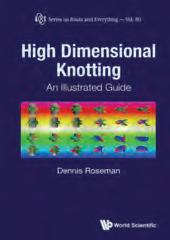
• Higher dimensions (beyond knotting of surfaces in 4-space) is considered
Readership: Graduate students and researchers in geometric topology, manifolds and cellcomplexes, scientists and engineers who want a concrete introduction to high dimensional construction and visualization.
500pp
Feb 2025
978-981-3237-39-1 US$178 £165
978-981-3237-40-7(ebook) US$285 £260
edited by Tongjun Wang (China State Railway Group, China)
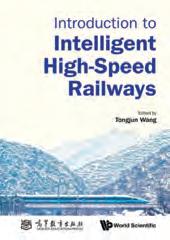
This book offers a comprehensive overview of China’s Intelligent HSR architecture, management methods, and remarkable achievements. It showcases pioneering research from China State Railway Group Co., Ltd.; highlighting their remarkable achievements in designing and constructing the Beijing-Zhangjiakou High-Speed Rail — a project that has been highly praised by the world’s leading railway organization, the Union of International Railways.
Readership: Graduate students, researchers and professionals specialising in rail transit design, construction and operation, and governments.
340pp

Jul 2024
978-981-128-744-2 US$128 £120
978-981-128-745-9(ebook) US$205 £190


edited by H L Gururaj (Manipal Institute of Technology, India), Tanuja Kayarga (Vidyavardhaka College of Engineering, India), Francesco Flammini (University of Applied Sciences and Arts of Southern Switzerland, Switzerland) & Dalibor Dobrilovic (University of Novi Sad, Serbia)

Federated Learning has greatly increased the potential to transmute data in the healthcare industry, enabling healthcare professionals to improve treatment of patients. This book comprises chapters on applying Federated models in the field of healthcare industry.
Readership: Academics/Researchers in machine learning, artificial intelligence, cyber security and blockchain technology.
202pp Jul 2024
978-981-128-793-0 US$88 £80
978-981-128-794-7(ebook) US$141 £130
Algorithms and Applications
edited by Xiaoli Li (A*STAR, Singapore), Xulei Yang (A*STAR, Singapore) & Hao Su (University of California San Diego, USA)

This book is organized into five sections, each of which addresses different aspects of 3D deep learning. Section I: Sample Efficient 3D Deep Learning, focuses on developing efficient algorithms to build accurate 3D models with limited annotated samples. Section II: Representation Efficient 3D Deep Learning, deals with the challenge of developing efficient representations for dynamic 3D scenes and multiple 3D modalities. Section III: Robust 3D Deep Learning, presents methods for improving the robustness and reliability of deep learning models in real-world applications. Section IV: Resource Efficient 3D Deep Learning, explores ways to reduce the computation cost of 3D models and improve their efficiency in resourcelimited environments. Section V: Emerging 3D Deep Learning Applications, showcases how 3D deep learning is transforming industries and enabling new applications for healthcare and manufacturing.
Readership: Advanced undergraduate and graduate students, researchers and practitioners.
500pp Jun 2024
978-981-128-648-3 US$158 £145
978-981-128-649-0(ebook) US$253 £230
edited by Xiaoli Li (A*STAR, Singapore), Savitha Ramasamy (A*STAR, Singapore), ArulMurugan Ambikapathi (Lam Research, Singapore), Suresh Sundaram (Indian Institute of Science, Bangalore, India) & Haytham M Fayek (RMIT University, Australia)
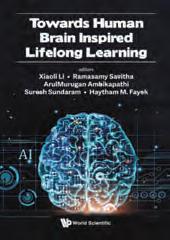
This book is a comprehensive compilation of diverse methods for continual learning, crafted by leading researchers in the field, along with their practical applications. These methods encompass various approaches, such as adapting existing paradigms like zero-shot learning and Bayesian learning, leveraging the flexibility of network architectures, and employing replay mechanisms to enable learning from streaming data without catastrophic forgetting of previously acquired knowledge.
Readership: Researchers and Practitioners of AI Practitioners, PhD scholars and researchers.
248pp May 2024
978-981-128-670-4 US$98 £90
978-981-128-671-1(ebook) US$157 £145
Transformations in Banking, Finance and Regulation ARTIFICIAL
edited by Marco Corazza (Ca’ Foscari University of Venice, Italy), René Garcia (University of Montreal, Canada & SKEMA Business School Canada, Canada), Faisal Shah Khan (Dark Quantum Lab, USA & SKEMA Business School Raleigh, USA), Davide La Torre (SKEMA Business School, France) & Hatem Masri (Applied Science University, Bahrain)

The topics covered in this book make it an invaluable resource for academics, researchers, policy makers, and practitioners alike who want to understand how AI has affected the banking and financial industries and how it will continue to change them in the years to come.
Readership: Academics, practitioners, financial investors.
450pp May 2024
978-1-80061-520-5 US$148 £135
978-1-80061-521-2(ebook) US$237 £220
The Dante Effect by Dingping (Frank) Qian With the Collaboration of Cotter Li
Since the author has been nurtured both in Chinese spiritual excellence and advanced Western cultures, this book is penned in a provocative style of knowledgeably poetic prose that will appeal to a broad audience.

Readership: Researchers, professionals, academics and graduate students in innovation, technology and information management.
700pp May 2024
978-981-124-968-6 US$198 £180
978-981-124-969-3(ebook) US$317 £290
by Cristian S Calude (University of Auckland, New Zealand)
“Journey with Calude through this varied terrain of spectacular insights. In an age when super AI’s menace, it is good to see what the unfettered human spirit can accomplish, and be proud.”
Gregory Chaitin Author of Algorithmic Information Theory

“Every page of this delightful book has another gem that contains either an insight into the halting problem or a connection between the halting problem and a different area. Cristian Calude, a world-class researcher, has done a magnificent job collecting these ideas and making them accessible to everyone.”
Noson S Yanofsky
Author of The Outer Limits of Reason: What Science, Mathematics and Logic Cannot Tell Us
Readership: Undergraduate and graduate students, researchers and practitioners in the fields of computer science, mathematics, logic, philosophy, physics, and a large category of educated readers.
332pp Apr 2024
978-981-123-227-5 US$128 £120
978-981-123-228-2(ebook) US$205 £190


edited by Muneo Hori (Japan Agency for Marine-Earth Science and Technology, Japan)
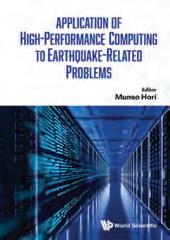
This major reference summarizes the theory, analysis methods, and computational results from supercomputers of various earthquake simulations using supercomputers. It covers simulations in the fields of physical geology, earthquake engineering — specifically the seismic response of structures — and the socioeconomic impact of post-earthquake recovery on cities and societies. These simulations provide an effective bird’s-eye view of earthquake occurrence, earthquake damage, and recovery from the damage.
Readership: Researchers in the fields of earth sciences, earthquake engineering, disaster-related social science; Advanced undergraduate and graduate students in the fields of earth sciences, earthquake engineering, disaster-related social science.
600pp May 2024
978-1-80061-462-8 US$168 £155
978-1-80061-463-5(ebook) US$269 £245
How It Works and What It Means for You by Tom
Kohn
This book addresses how machine learning affects the futures of the industries it is adopted in, how it works, what its strengths and weaknesses are, what it means for people’s lives and livelihoods, and what skills are needed to navigate it

Readership: Pitched at a wide audience, with the educated layperson in mind. It could also be useful to undergraduates who want some idea of where this technology is headed, with an eye toward the workforce. Organizations subject to or involved in machine learning would be appropriate e.g. finance, healthcare, retail, commerce or government technology departments for those who wish to upskill their workers in machine learning.
240pp Apr 2024
978-1-80061-502-1(pbk) US$28 £25
978-1-80061-488-8 US$68 £65
978-1-80061-489-5(ebook) US$109 £100
Digital Transformation: Accelerating Organizational Intelligence - Vol 6 STRATEGIC RISK, INTELLIGENCE AND DIGITAL TRANSFORMATION
by Eduardo Rodriguez
(Wenzhou – Kean University, China & IQAnalytics Inc., Canada)

In this book, the study of strategic risk is not only for its control and mitigation using analytics and digital transformation in organizations, but also it is about the strategic risks that digital transformation can bring to organizations. Strategic risk control is one of the goals in creating intelligent organizations and at the same time it is part of the appetite for creating smarter organizations to support organizations’ development. Knowledge that is created by data analytics and the capacity to operationalize that knowledge through digital transformation can produce potential sustainable competitive advantages.
Readership: Postgraduate students in Data Science, Risk Management, Finance.
496pp Apr 2024
978-981-127-859-4 US$148 £135
978-981-127-860-0(ebook) US$237 £220
World Scientific Series on Future Computing Paradigms and Applications - Vol 3 DISTRIBUTED INTELLIGENT CIRCUITS AND SYSTEMS
edited by Balwinder Raj (Dr B R Ambedkar National Institute of Technology, India), Brij B Gupta (Asia University, Taiwan), Shalendra Singh (Pranveer Singh Institute of Technology, India) & Monirujjaman Khan (North South University, Bangladesh)
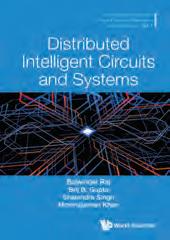
The main objective of this book is to provide insights into recent advances in distributed intelligent circuits, systems and their applications. Distributed intelligence is the key enabler for innovations in machine-to-machine communications. The innovations are directed towards keeping existing algorithms as the base and developing new intelligent systems by employing smart technologies
Readership: Graduate and post-graduate students, and researchers specialising in electronics engineering and computer engineering.
452pp Apr 2024
978-981-127-952-2 US$158 £145
978-981-127-953-9(ebook) US$253 £230
A Practical Guide for Clinicians by Campion Quinn (Rockville Medical, LLC, USA)
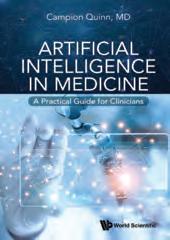
“Artificial Intelligence in Medicine” is a comprehensive guide exploring the transformative impact of artificial intelligence (AI) in healthcare. The book delves into the foundational concepts and historical development of AI in medicine, highlighting data collection, preprocessing, and feature extraction crucial for medical applications. It showcases the benefits of AI, such as accurate diagnoses and personalized treatments, while addressing ethical and regulatory considerations.
Readership: Healthcare professionals including, physicians, physician assistants, nurse practitioners, nurses, medical students, healthcare administrators, chief information officers, pharmaceutical executives, medical researchers, medical content providers, medical educators, policy makers, health informaticians, ethicists, legal experts, industry professionals (Ai technology companies), and AI enthusiasts. Sectors that would be interested in this book include: computer sciences, artificial intelligence, healthcare, academic, pharmaceutical, medical device, business, and healthcare administration and management.
356pp Mar 2024
978-981-128-456-4(pbk) US$68 £65
978-981-128-410-6 US$148 £135
978-981-128-411-3(ebook) US$237 £220
by Michael Krause
This book examines the financial, technical, and social situation of the world today, and outlines some of the existing policies and technologies that will help us on our long and unpredictable journey through climate change. Three major factors that have led us to today’s predicament — our economic system, our own inexcusable ignorance, and continued political inertia — must be addressed, discussed, and changed for the better.

Readership: General public, undergraduate and graduate students interested in climate change, green technologies and societal and behavioral change.
372pp Feb 2024
978-981-128-739-8(pbk) US$38 £35
978-981-128-683-4
US$88 £80
978-981-128-706-0(ebook) US$141 £130


Concepts and Applications by Bina Ramamurthy (University at Buffalo, USA) & Kumar Madurai (Novosem, USA)

Blockchain is being touted as the next Internet revolution akin to the worldwide web and e-commerce. This unique compendium lays the foundations for the conceptual understanding of the components necessary to build blockchain-based applications. The volume provides more than 100 illustrations and examples of these applications in various business domains. Hands-on demonstrations on software will help to instal and explore the tools and techniques discussed.
The useful reference text benefits any existing businesses that want to introduce blockchain in their operations.
Readership: Researchers, professionals, academics, and graduate students in digital security and innovation/technology and information management.
350pp Apr 2025
978-981-125-638-7(pbk) US$58 £55
978-981-125-571-7 US$98 £90
978-981-125-572-4(ebook) US$157 £145
The Mathematics of Enumeration and Positive Reducibilities by S Barry Cooper (University of Leeds, UK), Andrea Sorbi (University of Siena, Italy) & Mariya Soskova (Sofia University, Bulgaria)
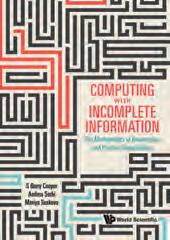
This book aims to provide a unique introduction to the mathematics of computing with imperfect information. This rapidly developing field has been represented by a growing number of diverse contributions to academic journals and the proceedings of international conferences. The aim here is to bring a new coherence and clarity to this complex and expanding body of research, and to give a comprehensive overview that will be invaluable to both experts and research students new to the area.
Readership: Research students and experts in the mathematics of computing with incomplete information and computational structure of information.
450pp Feb 2025
978-981-4383-14-1 US$148 £135
978-981-4383-15-8(ebook) US$237 £220
COMPUTER SECURITY
3rd Edition
by Wenliang Du (Syracuse University, USA)
This unique compendium is based on the author’s teaching and research experiences. It covers the fundamental principles in cybersecurity and helps readers understand how various attacks work, what their fundamental causes are, how to defend against them, and how various defense mechanism’s function.
For each security principle, the book uses a series of hands-on activities to help explain the principle. Readers can "touch", play with, and experiment with the principle, instead of just reading about it.
Readership: Researchers, professionals, academics, undergraduate and graduate students in digital security.
543pp Jan 2025
978-981-126-329-3 US$138 £125
Scalable Tools and Frameworks for Your Needs by Domenico Talia, Paolo Trunfio, Fabrizio Marozzo, Loris Belcastro, Riccardo Cantini & Alessio Orsino (University of Calabria, Italy)
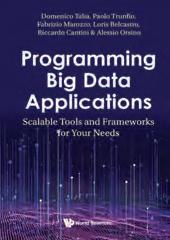
• Helps designers and developers in programming Big Data applications by identifying and selecting the best/appropriate programming tool based on their skills, hardware availability, application domains and purposes, and also considering the support provided by the developer community
• Presents real programming examples for each programming language/framework to show how Big Data applications can be developed
Readership: Undergraduate and graduate students in computer science, computer engineering, data science, and data engineering. PhD students and researchers in computer science and engineering, and data science.
232pp May 2024
978-1-80061-504-5 US$78 £70
978-1-80061-505-2(ebook) US$125 £115
Learning Causality and Latent Structures from Data by Qing Zhou (University of California, Los Angeles, USA)
• A comprehensive treatment of a collection of latent structure models and graphical models with wide applications in many areas
• A unified graphical view of the conditional independence structures in these models, which play a key role in their inference methods
• A self-contained coverage of recent methods and theory for structure learning of causal graphical models from different types of data
Readership: This book is suitable for graduate students in statistics, data science, computer science and other quantitative and computational sciences. The book can be used as a textbook for courses on statistical modeling, causal inference, graphical models, and machine learning. It is also suitable for researchers interested in causal inference, causal discovery, graphical models, Bayesian networks, structure learning, latent structure models, and related areas.
250pp Feb 2025
978-981-129-068-8 US$88 £80
978-981-129-069-5(ebook) US$141 £130
Advances and Opportunities with Big Data and Analytics APPLIED HEALTH CARE
Enabling Transformative Health Care through Data Science, Machine Learning, and Cognitive Computing by Mark Albert (Loyola University, USA), Plamen Petrov (Deloitte Consulting, USA) & Rajeev Ronanki (Deloitte Consulting, USA)
• Heavy emphasis on direct application to healthcare through cases and more detailed instruction
• Introduction to advanced techniques like cognitive computing in the field of health care
• A balanced presentation of theoretical foundations and realworld practical examples
Readership: Supplementary textbook for postgraduate students in advance analytics and cognitive computing courses in Computer Science or Artificial Intelligence/Machine Learning degrees.
300pp Mar 2025
978-981-3142-54-1 US$115 £105
978-981-3142-55-8(ebook) US$185 £170


Acquisition and Use of Big Data by Alexander W Koch (Technical University of Munich, Germany)
This book offers a structured understanding of sensor technologies, principles, applications, and their integration into IoT systems, thereby bridging the gap between sensors and IoT applications.
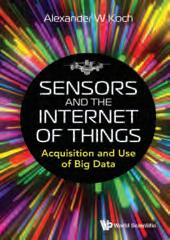
Readership: Advanced undergraduate and graduate students and practitioners in the fields of computer science, engineering, measurement systems, and physics; and scientists, engineers, and decision makers in industry.
200pp Jan 2025
978-981-128-518-9 US$78 £70
978-981-128-519-6(ebook) US$125 £115
A Missing View on Batteries
edited by Kai Peter Birke (University of Stuttgart, Germany), Sabri Baazouz (Fraunhofer Institute for Manufacturing Engineering and Automation, Germany) & Julian Grimm (Fraunhofer Institute for Manufacturing Engineering and Automation, Germany)

Achievable energy densities dominate important future research activities on battery technology. This book deduces in detail the future options for energy density enhancement of rechargeable battery cells and complete batteries. It connects rechargeability to energy density limits and gives a detailed argumentation on how and when battery energy densities will achieve their inherent limits.
Readership: Researchers, postgraduate and advanced undergraduate students, industry professionals, specialising in battery cell R&D and manufacturing, as well as governments and civil servants who wish to understand the topic.
250pp Apr 2025
978-981-128-204-1 US$88 £80
978-981-128-205-8(ebook) US$141 £130
Theory and Practice of Digital Belongings
by Carlos Molina-Jimenez (University of Cambridge, UK), Dann Toliver (University of Cambridge, UK), Hazem Danny Nakib University of Cambridge, UK) & Jon Crowcroft University of Cambridge, UK)
This book delves into the theory of fair exchange, from the historic to the cuttingedge, and presents a unified framework for understanding fair exchange protocols. Every exchange starts with a handshake, which is followed by four additional operations: deposit; verification; synchronization; and release or restoration. The environments in which these operations take place determine the properties of the resulting protocol, and the characteristics of the items that can be exchanged.
Readership: Researchers (from academia and industry); Industry practitioners (technology, e-commerce, marketplaces); Postgraduate students; Libraries.
292pp Mar 2024
978-1-80061-516-8 US$98 £90
978-1-80061-517-5(ebook) US$157 £145
edited by Jun Xu (King’s Own Institute, Australia)
This compendium looks at the current status and practices of teaching and learning facilitated/enabled by digital technologies, reviews challenges/issues associated with classroom teaching, online teaching and hybrid-learning, and discusses success factors and future directions of teaching and learning in the digital era.
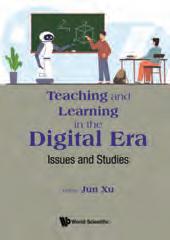
Readership: Researchers, professionals, academics and graduate students in AI/Machine Learning, databases and digital security.
364pp Apr 2024
978-981-128-561-5 US$148 £135
978-981-128-562-2(ebook) US$237 £220
Wireless Grid Applications, Architecture and Security for the Internet of Things by Tyson T Brooks (Syracuse University, USA)

This unique compendium is composed for researchers, professionals and students working in the field of innovation management, wireless technologies, information system theory, systems engineering, security system designers, and mobile cloud service developers. University professors and researchers involved in wireless grids, edgeware and IoT related networking may find the book useful for their undergraduate and especially graduate courses.
Readership: Researchers, academics, professionals and graduate students in information science, digital security, parallel computing, networking and knowledge information management.
428pp Apr 2024




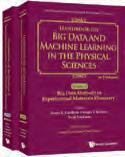
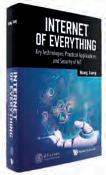


by Marc Pomplun
(University of Massachusetts Boston, USA)
The proposed book will not only teach readers the fundamental methods and concepts in computer vision, but it will also show them in detail how to implement the most important algorithms efficiently. Typically, the usual textbooks either do not address implementation issues, or they provide some sample code that is based on existing image-processing libraries. suboptimal solutions, or both.
Readership: Undergraduates, graduates, and professionals studying/ dealing with machine perception/computer vision, pattern recognition/ image analysis, software engineering/programming, neural networks, robotics & automated systems.
650pp Feb 2025
978-981-4571-97-5(pbk) US$78 £70
978-981-4571-96-8 US$129 £120
Series in Machine Perception and Artificial Intelligence - Vol 90 WAVELET THEORY APPROACH TO PATTERN RECOGNITION
3rd Edition
by Yuan Yan Tang (University Macau, China) & Lixiang Xu (Hefei University, China)

This 3rd edition tackles the basic principle of deep learning as well as the application of combination of wavelet theory with deep learning to pattern recognition. Five new chapters related to the combination of wavelet theory and deep learning are added with many novel research results.
Readership: Researchers, professionals, academics and graduate students in pattern recognition/image analysis, machine perception, AI and electrical and electronic engineering.
550pp Sep 2024
978-981-128-404-5 US$168 £155
978-981-128-405-2(ebook) US$269 £245
DIFFERENTIAL GEOMETRICAL FOUNDATIONS OF INFORMATION GEOMETRY
Geometry of Statistical Manifolds and Divergences by Hiroshi Matsuzoe (Nagoya Institute of Technology, Japan)
This monograph gives foundations of information geometry from the viewpoint of differential geometry. In information geometry, a statistical manifold structure is important, which is related to geometry of a pair of dual affine connections and an asymmetric distance called divergence. First, we summarize geometry of statistical manifolds. As applications, we explain statistical inferences and information criterions from the viewpoint of differential geometry.
Readership: Graduate students, researchers and professionals in Geometry.
350pp Jan 2025
978-981-4618-76-2 US$130 £120
978-981-4618-77-9(ebook) US$208 £190
edited by Mark Last (Ben-Gurion University of the Negev, Israel), Marina Litvak (Sami Shamoon College of Engineering, Israel) & Miao Lin (Beijing Information Science & Technology University, China)
This unique compendium provides a comprehensive overview of the state-of-the-art methods in the extremely “hot” area of online propaganda detection and monitoring. It discusses the difficulties of developing automated methods and systems for online propaganda and misinformation detection, along with the potential contributions of machine learning techniques.
Readership: Researchers, professionals, academics, graduate students in AI, machine learning and information sciences.
160pp Jan 2025
978-981-128-185-3 US$68 £65
978-981-128-186-0(ebook) US$109 £100
Series in Computer Vision - Vol 7
Theory and Applications for Remote Sensing by Ronny Hänsch (German Aerospace Center (DLR), Germany)
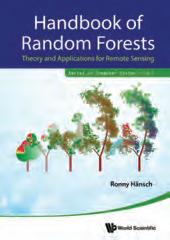
This compendium provides a hands-on description of Random Forests. It starts with a consistent introduction of general methods to create, train, and fuse ensembles of decision trees. Instead of limiting the discussion to the general-purpose layout of traditional Random Forests, this book outlines specifications during tree creation and training that are especially well suited to analyze structured data such as images. The theoretical foundations are explained as well as practical and implementation issues. The many possible variations of the Random Forest model are discussed together with their implications on the prediction results to provide insights into the influence of these parameters and their possible side-effects. Last but not least, this unique title provides specific examples of the usage of Random Forests for analysing remote sensing imagery.
Readership: Researchers, professionals, academics and graduate students in pattern recognition/image analysis, machine perception/ computer vision, and artificial intelligence.
300pp Feb 2025
978-981-3224-05-6 US$128 £120 978-981-3224-06-3(ebook) US$205 £190
Series on Language Processing, Pattern Recognition, and Intelligent Systems - Vol 9 EMERGING TOPICS IN
edited by Mounîm A El-Yacoubi (Institut Polytechnique de Paris, France), Nicole Vincent (Université Paris Cité, France) & Camille Kurtz (Université Paris Cité, France)
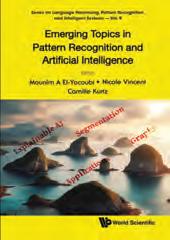
The unique compendium covers a wide range of recent advanced contributions in Pattern Recognition and Artificial Intelligence, both in theoretical aspects and applications. It highlights the importance of Deep Learning in various domains, from acquisition to Decision Making.
Readership: Researchers, professionals, academics and graduate students in artificial intelligence, machine learning and deep learning.
300pp Jun 2024
978-981-128-911-8 US$108 £100
978-981-128-912-5(ebook) US$173 £160


Series on Language Processing, Pattern Recognition, and Intelligent Systems - Vol 7 IMAGE ANALYSIS AND PATTERN RECOGNITION
State of the Art in the Russian Federation edited by Igor Gurevich & Vera Yashina (Federal Research Centre “Computer Science and Control” of the Russian Academy of Sciences, Moscow, Russian Federation)
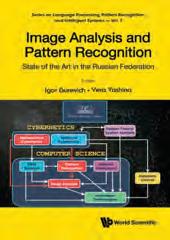
This collective compendium highlights the achievements of Soviet and Russian mathematical and computer science scientific schools in the area of image analysis and understanding, pattern recognition, artificial intelligence and adjacent fields of computer sciences and applied mathematics.
Readership: Researchers, professionals, academics, and graduate students in pattern recognition/image analysis, theoretical computer science and AI.
950pp Jun 2024
978-981-126-720-8 US$248 £230
978-981-126-721-5(ebook) US$397 £365
Series on Language Processing, Pattern Recognition, and Intelligent Systems - Vol 8 FRONTIERS
edited by Jie Zhou (Northern Illinois University, USA), Hanchuan Peng (Southeast University, China) & Marianna Rapsomaniki (University of Lausanne, Switzerland)
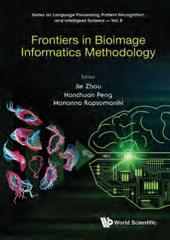
This unique compendium provides stateof-the-art computational methodology and applications in bioimage informatics. It covers cutting-edge technology developments in biological image analysis, where images come from new modalities and are often large scale, high throughput and high dimensional. The book reflects advances in intelligent algorithms for tasks such as biological image segmentation, reconstruction, and object tracking. Contributed by world renowned researchers, this useful reference text presents case studies that can potentially help readers find approaches and resources to address their imminent scientific problems.
Readership: Researchers, professionals, academics and graduate students in image analysis, AI, bioinformatics, and neural networks.
376pp Apr 2024
978-981-128-612-4 US$128 £120
978-981-128-613-1(ebook) US$205 £190
World Scientific Lectures in Emerging Technologies - Vol 1 FIRST
A Practical Guide for Beginners by Javad Shabani & Eva Gurra (New York University, USA)
The volume highlights intuition on counterintuitive topics such as quantum mechanics, basic mathematical tools and calculations involving linear algebra, and applies these concepts to quantum information with guided problems and coding exercises.

Readership: Researchers, professionals, academics, undergraduate and graduate students in supercomputing.
150pp Jan 2025
978-981-125-412-3(pbk) US$38 £35
978-981-125-319-5 US$78 £70
978-981-125-320-1(ebook) US$125 £115
by Izumi Ojima (Research Origin for Dressed Photon, Japan), Kazuya Okamura (Nagoya University, Japan) & Hayato Saigo (Nagahama Institute of Bio-Science and Technology, Japan)
According to the fundamental concept “adjunctions” in category theory, the Micro and Macro in nature can be connected in a coherent way, which constitutes quite an effective theoretical and mathematical machinery that has not been commonly recognized. On the basis of this concept, many important problems in physics and mathematics can be viewed from quite different and fresh angles, which facilitate deep understanding and the satisfactory solution of those problems.
Readership: Graduate students and researchers in quantum theory, mathematical physics, neural networks, pattern recognition.
300pp Feb 2025
978-981-3238-36-7 US$98 £90
A Physician’s Guide by Campion Quinn (Rockville Medical, LLC, USA)
The book opens with an insightful introduction into the burgeoning role of emerging technologies in healthcare. It sets the stage for an in-depth exploration of these innovations, emphasizing their clinically proven benefits and the pragmatic aspects of their integration into clinical practice, underpinned by a strong ethical framework.
Readership: Doctors, nurses, hospital administrators, college and graduate students in healthcare administration and bioengineering.
300pp Sep 2025
978-981-128-914-9 US$98 £90
978-981-128-915-6(ebook) US$157 £145
Disease Modeling and Cyber Security by Marc Mangel (University of Bergen, Germany & University of California, Santa Cruz, USA)
• No other book provides such in-depth treatment of both disease modeling and cyber systems

• By focusing on two key models [the Pulse Attack Model and the Fundamental Model for Simultaneous Cyber Operations] that are not specific to any one system but have much in common with many systems, the book allows readers to sharpen thinking and gain insight into cyber security through the lens of population modeling of disease
Readership: This is a combination of research monograph and textbook, suitable for use in advanced undergraduate or graduate courses and also intended for established researchers — both workers in the population biology of disease and in cyber security.
300pp Sep 2025
978-981-128-756-5 US$108 £100 978-981-128-757-2(ebook) US$173 £160



by David O Johnson (University of
Kansas, USA)

The book’s content is designed to provide practical guidance and insights for conducting experiments in Human – Robot Interaction (HRI) and publishing the results in scientific journals. It includes a detailed explanation of how to conduct HRI experiments and what to do and what not to do to get an article accepted for publication. It is tailored to those seeking to deepen their understanding of HRI methodologies, statistical measurements, and research design.
Readership: Advanced students, researchers, and professionals who are actively engaged or interested in the field of Human – Robot Interaction (HRI).
324pp Mar 2024
978-981-128-284-3 US$148 £135
978-981-128-285-0(ebook) US$237 £220
by Koji Koyamada (Kyoto
University, Japan)

This book serves as a comprehensive stepby-step guide on data analysis and statistical analysis. It covers fundamental operations in Excel, such as table components, formula bar, and ribbon, and introduces visualization techniques and PDE derivation using Excel. It also provides an overview of Google Colab, including code and text cells, and explores visualization and deep learning applications.
Readership: The book is primarily intended for readers in the fields of data analysis, statistics, and applied mathematics. The target readership includes professionals, researchers, and students in both academia and industry. Discipline/Profession: Data analysts, Statisticians, Mathematicians, Researchers in applied sciences and engineering, Graduate and Undergraduate students in data analysis, statistics, and applied mathematics.
232pp Feb 2024
978-981-128-361-1 US$88 £80
978-981-128-362-8(ebook) US$141 £130
by L Joskowicz (The Hebrew University of Jerusalem, Israel), N Shamul (The Hebrew University of Jerusalem, Israel), Z Adelman (The Hebrew University of Jerusalem, Israel) & G Medan (The Hebrew University of Jerusalem, Israel)
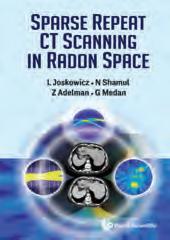
This comprehensive compendium introduces a unique and novel approach to X-ray dose reduction by sparse repeat scanning. Based on sparse sampling in Radon space, the methods obviate the need for image reconstruction and reduce X-ray dose by up to 10 times of the normal dose without compromising the robustness and accuracy of the measurements. The methods consist of automatic rigid and deformable registration and changes detection in subsequent CT scans, and realtime needle tracking during interventional procedures.
Readership: Researchers, professionals, academics and graduate students in biomedical engineering and machine perception.
180pp Feb 2025
978-981-127-023-9 US$78 £70
978-981-127-024-6(ebook) US$125 £115
edited by Mark Shelhamer (Johns Hopkins University School of Medicine, USA) & Erik Antonsen (Massachusetts General Hospital, USA)
“The multiple interacting aspects of human spaceflight make a systems approach essential. A book on this topic will be well received.”
James Best
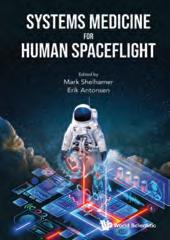
Former Dean, LKC School of Medicine, Nanyang Technological University, Singapore Professor Emeritus, University of Melbourne, Australia
• First book that covers systems medicine applied to human spaceflight
• Provides an overview of current NASA approaches to astronaut medical care
• Examines the many and varied spaceflight systems that contribute to human health and performance in flight
• Outlines areas where future developments will be critical
Readership: Spaceflight professionals (flight surgeons, mission planners, spacecraft designers). Medical professionals (aeromedical examiners, biomedical engineers, bioanalytics researchers, those interested in systems approaches to medical care). Students interested in space and medicine, at all levels.
368pp May 2024 978-981-128-768-8 US$138 £125 978-981-128-769-5(ebook) US$221 £205
World Scientific Series on Future Computing Paradigms and Applications - Vol 2 SDN AND NFV
A New Dimension to Virtualization by Brij B Gupta (Asia University, ROC), Amrita Dahiya (Thapar Institute of Engineering and Technology, India) & Elhadj Benkhelifa (Staffordshire University, UK)
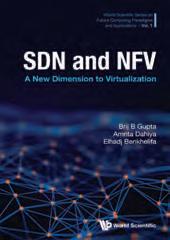
“This book unravels the intricacies of Software-Defined Networking (SDN) and Network Function Virtualization (NFV), offering a comprehensive journey through the modern networking landscape. From the fundamental elements of networking to the evolution of SDN and NFV, architectural insights, and their integration with cutting-edge technologies like IoT and 5G, this book is your gateway to understanding the transformative power of virtualization. Whether you are a networking professional, a student, or an enthusiast, this book is your key to unlocking the new dimension of virtualized networking.”
Prof. Priyanka Chaurasia Ulster University, UK
Readership: Graduate- and postgraduate-level students in Robotics and Automated Systems, Networking, Software Engineering and Digital Security, Innovation, Technology, Knowledge and Information Management.
292pp Feb 2024
978-981-125-487-1 US$98 £90
978-981-125-598-4(ebook) US$157 £145

www.worldscientific.com/page/ecatalogues


by Denis Belomestny (Duisburg-Essen University, Germany) & Sergey Samsonov (National University Higher School of Economics, Russia)
• Unique coverage of modern variance reduction techniques
• Many illustrative examples from Machine Learning and Finance
• Theoretical analysis of the presented algorithms
• Treatment of martingale and Stein control variate methods
Readership: Graduate students and researchers in the areas of Statistics, Artificial Intelligence, Machine Learning and Finance.
500pp Jan 2025
978-981-128-777-0 US$158 £145
978-981-128-778-7(ebook) US$253 £230
Series in Mathematical Biology and Medicine - Vol 10 OPTIMAL TRANSPORT NETWORKS IN NATURE
by Natalya
Kizilova (Kharkov National University, Ukraine)
This unique book presents a broad range of data on geometry and topology of long-distance liquid transport networks in nature including circulatory and respiratory systems of mammals, trophic fluid transport systems of animals, and conducting systems of higher plants. It is the very first book where evidence of the common design principles and optimal properties of the transportation networks of vascular plants and animals is provided.
Readership: Academics, researchers, and graduate students in mathematical biology, mathematical modeling, fluid mechanics, biomedical engineering, pattern recognition/image analysis.
200pp Feb 2025
978-981-283-873-5 US$106 £100
978-981-283-874-2(ebook) US$170 £155
THE SELECTED WORKS OF RODERICK S C WONG
Volume 4
edited by Dan Dai (City University of Hong Kong, Hong Kong) & Ding-Xuan Zhou (The University of Sydney, Australia)
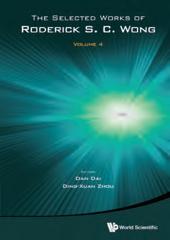
This book represents a distinguished collection of research papers authored by the esteemed Professor Roderick Wong, a globally recognized mathematician, and a pioneer in the field of applied mathematics. His brilliant academic journey has spanned across different continents, including North America and Hong Kong.
Readership: Academics, researchers, post-graduate students, undergraduate students, mathematicians, physicists, engineers.
550pp Dec 2024
978-981-129-085-5 US$168 £155
978-981-129-086-2(ebook) US$269 £250

facebook.com/worldscientific

x.com/worldscientific
SMART IN SILICO TOOLS Invitation to Artificial Intelligence-Equipped Organic Lab by Anatoly M Belostotskii (Bar-Ilan University, Israel)
“This book is quite comprehensive as it enables an organic chemist to carry out synthetic planning, structure elucidation and instrumental separation of organic compounds with the help of AI-based machine learning.”
Irishi N N Namboothiri Professor of Chemistry, Indian Institute of Technology (IIT) Bombay, India
Readership: Academics, researchers, post-docs and graduate students working in organic, bioorganic and medicinal chemistry in universities, colleges, research institutes, and the industry (including pharmaceutical companies). Will also be of interest to lecturers of advanced courses and seminars in computational chemistry, organic synthesis, and drug discovery.
350pp Jan 2025
978-981-128-167-9 US$128 £120
978-981-128-168-6(ebook) US$205 £190
by Robin Kothari (Microsoft Quantum, USA), Troy Lee (Nanyang Technological University, Singapore), Ilan Newman (University of Haifa, Israel) & Mario Szegedy (Rutgers University, USA)
Query complexity addresses issues like the number of calls to a black box routine, the number of queries to a data structure or the number of steps made by a parallel processor. It has immense applications, and not surprisingly a large number of papers have been written on it. Yet, currently there is no book that is entirely devoted to this subject. We fill this gap, and gather not only many valuable articles into a single book, but also organize knowledge, explain some key results, and give presentable outlines. The work we do for the reader saves valuable time and also points to connections for those who are just getting familiar with the area.
Readership: Researchers, academics, professionals and graduate students in theoretical computer science.
200pp Feb 2025
978-981-3223-20-2 US$88 £80
978-981-3223-21-9(ebook) US$141 £130
WSPC Book Series in Unconventional Computing - Vol 4 REVERSIBLE WORLD OF CELLULAR AUTOMATA
Fantastic Phenomena and Computing in Artificial Reversible Universe by Kenichi Morita (Hiroshima University, Japan)

This unique comprehensive compendium provides extensive studies on reversible cellular automata (RCAs), exhibiting a wide range of interesting phenomena similar to the Game-of-Life, a wellknown irreversible CA.
Readership: Researchers, professionals, academics, and graduate students in theoretical computer science, complex systems and computer engineering.
300pp Dec 2024
978-981-128-032-0 US$118 £110
978-981-128-033-7(ebook) US$189 £175


Advanced Series on Mathematical Psychology - Vol 7 KNOWLEDGE STRUCTURES
Recent Developments in Theory and Application
edited by Jürgen Heller (University of Tübingen, Germany) & Luca Stefanutti (University of Padua, Italy)
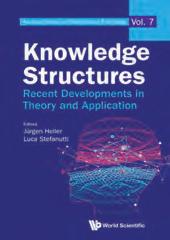
Founded in 1985 by Jean-Claude Falmagne and Jean-Paul Doignon, Knowledge Structure Theory (KST) constitutes a rigorous and current mathematical theory for the representation and the assessment of human knowledge. The seminal work of these authors initiated a highly active research strand with an ever-growing literature, mostly scattered across various technical journals.
Starting from a concise but comprehensive introduction to its foundations, this volume provides a state-of-the-art review of KST. For the first time the volume brings together the most important theoretical developments and extensions of the last decade and presents new areas of application beyond education, with contributions by key researchers in the field.
Among the important advances covered by this book are (1) a comprehensive treatment of probabilistic models in KST; (2) polytomous extensions of the theory; (3) KST-based psychological diagnostics and neuropsychological assessment; (4) the representation and assessment of cognitive skills in problem solving, as well as procedural skills. In addition, this book also includes an overview of available software for the application of KST.
Readership: (1) Researchers in education, psychometrics, pyschological testing, and technology-enhanced learning; (2) researchers in cognitive assessment and/or cognitive modelling; (3) researchers interested in the applications of knowledge structure theory as a innovative alternative to trandtional approaches in many domains including pyschometrics, data analysis, medical diagnostics, and psychology; (4) background materials for advanced courses on psychometrics, data analysis, or cognitive psychology; (5) secondary market: libraries of universties, and educational research instutitions.
300pp Dec 2024
978-981-128-047-4
US$108 £100
978-981-128-048-1(ebook) US$173 £160
Series on Computers and Operations Research - Vol 11 MATHEMATICAL
DIFFERENTIAL EQUATIONS AND APPLICATIONS
edited by Themistocles M Rassias (National Technical University of Athens, Greece) & Panos M Pardalos (University of Florida, USA)

This comprehensive volume presents essential mathematical results devoted to topics of mathematical analysis, differential equations and their various applications. It focuses on differential operators, Wardowski maps, low-oscillation functions, Galois and Pataki connections, Hardy-type inequalities, to name just a few.
Effort has been made for this unique title to have an interdisciplinary flavor and features several applications such as in tomography, elastic scattering, fluid mechanics, etc.
Readership: Researchers, professionals, academics and graduate students in theoretical computer science, computer maths, and general applied maths.
750pp Jul 2024
978-981-126-703-1 US$188 £175
978-981-126-704-8(ebook) US$301 £275
by Esfandiar Haghverdi (Indiana University Bloomington, USA) & Liugen Zhu (Indiana University Indianapolis, USA)

This is a concise book that introduces students to the basics of logical thinking and important mathematical structures that are critical for a solid understanding of logical formalisms themselves as well as for building the necessary background to tackle other fields that are based on these logical principles.
Readership: Undergraduate students in Informatics, Information Science, Computer Science, Data Science, Artificial Intelligence, Cognitive Science.
164pp
May 2024
978-981-129-025-1(pbk) US$38 £35
978-981-128-888-3 US$78 £70
978-981-128-889-0(ebook) US$125 £115
(In 2 volumes)
by Peter A Fejer (University of Massachusetts Boston, USA) & Dan A Simovici (University of Massachusetts Boston, USA)
The useful reference text has close to 800 exercises and supplements to deepen understanding of the subject. It emphasizes proofs and overcomes technical difficulties by providing detailed arguments. Computer scientists and mathematicians will benefit from this volume.
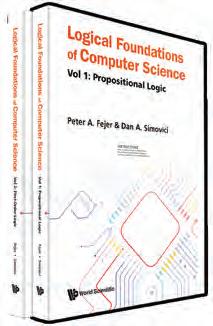
Readership: Researchers, professionals, academics and graduate students in theoretical comp science and logic & set theory.
1200pp Jul 2024
978-981-128-936-1(Set) US$420 £385 978-981-128-934-7(Set)(ebook) US$674 £620
by Hafiz Md. Hasan Babu (University of Dhaka, Bangladesh)

DNA Logic Design: Computing with DNA not only unravels the theoretical intricacies but also navigates the practical challenges, offering a comprehensive exploration of a groundbreaking field at the intersection of biology and computer science. The book starts with the basics of DNA computing, and then describes the fundamental operations of DNA computing. Various kinds of logical designs are then translated into the DNA computing context: arithmetic circuits, combinational circuits, sequential circuits, memory devices, programmable logic devices, and nano processors. Heat and speed calculation techniques round off the book.
Readership: Students, faculty members, and researchers specializing in fields related to biology, molecular biology, DNA Computing, reversible logic design, biocomputing, mathematics, computer science, and engineering.
292pp
May 2024
978-981-128-771-8 US$98 £90
978-981-128-772-5(ebook) US$157 £145


Short Stories of Clowns, Contortionists, and Court-Jesters by Inavamsi Enaganti (Param Innovation Centre, India), Nivedita Ganesh (New York University, USA) & Bud Mishra (New York University, USA) Illustrated by: Alexander Lu
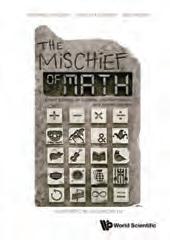
Embark on a whimsical odyssey through the realms of logic, game theory, paradoxes, biases, fake data detection, graph theory, AI bots and so much more! Within these pages you will find a collection of fictional short stories that weave together the intriguing, the counterintuitive and the downright quirky, with bold characters from every walk of life. Each chapter is written in a unique style, sprinkled throughout with anecdotes, open questions and fun exercises and to tickle the mind.
Readership: All undergraduate and students in the second half of high school, particularly in the fields of mathematics, computer science, engineering, economics, business, political science, and social science; General public who are curious about the intricacies and counterintuitive nature of reality.
188pp Jun 2024
978-981-128-802-9(pbk) US$25 £25
978-981-128-759-6 US$48 £45
978-981-128-760-2(ebook) US$98 £90
WSPC Book Series in Unconventional Computing - Vol 3 ACTIN COMPUTATION
Unlocking the Potential of Actin Filaments for Revolutionary Computing Systems edited by Andrew Adamatzky (University of the West of England, UK)
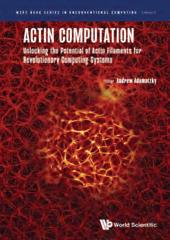
The book’s theoretical and modelling framework serves as a crucial stepping stone towards the experimental realisation of actinbased cytoskeleton computers. Bridging the gap between theory and practice, researchers and scientists can leverage this knowledge to conduct experiments, validate hypotheses, and explore the practical implications of actin-based computing systems.
Readership: Primary: Computer architects , system developers, molecular biologists. Secondary: Popular computing-interested public.
328pp Apr 2024
978-981-128-506-6 US$118 £110
978-981-128-507-3(ebook) US$189 £175
Theory, Trends, and Applications
by Alexander Meduna & Tomás Kožár (Brno University of Technology, Czech Republic)
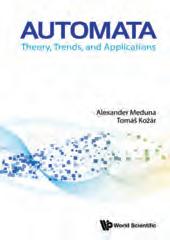
World Scientific Series on Future Computing Paradigms and Applications - Vol 1 BIG
by Brij B Gupta (Asia University, Taiwan) & Mamta (Punjab Engineering College, Chandigarh, India)
“This book explores the intricacies of data management and analytics in this in-depth guide, delving into data storage, processing, and advanced analytical techniques for a holistic understanding of data ecosystems.”
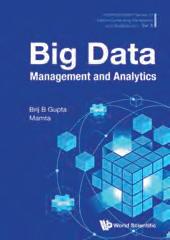
Dr Dragan Perakovic Professor and Head of Department of Information and Communication Traffic & Head of Chair of Information and Communication System and Service Management, University of Zagreb, Croatia
Readers will gain insights into choice of data models, data extraction, data integration to solve large data problems, data modelling using machine learning techniques, Spark’s scalable machine learning techniques, modeling a big data problem into a graph database and performing scalable analytical operations over the graph and different tools and techniques for processing big data and its applications including in healthcare and finance.
Readership: Graduate and postgraduate students in Innovation/ Technology/Knowledge/ Information Management. For researchers, this book provides fundamental and needful insights into the domain that can assist them in exploring this area from the elementary level. Industry CIOs will also find the book useful for conceptual clarity.
288pp Mar 2024
978-981-125-711-7 US$88 £80 978-981-125-712-4(ebook) US$141 £130
An Engineering-Humanities Conversation by Suman Gupta (The Open University, UK) & Peter H Tu (General Electric Research, USA)
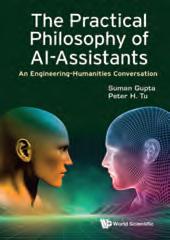
This book provides an in-depth analysis of classical automata theory, including finite automata, pushdown automata, and Turing machines. It also covers current trends in automata theory, such as jumping, deep pushdown, and regulated automata. The book strikes a balance between a theoretical and practical approach to its subject by presenting many real world applications of automata in a variety of scientific areas, ranging from programming language processing through natural language syntax analysis up to computational musicology.
Readership: Scientists working in the areas of theoretical computer science, computational mathematics, computational linguistics, and compiler writing, and graduate courses dealing with the theory and application of automata, and theory of computation.
436pp Nov 2023
978-981-127-812-9 US$148 £135
978-981-127-813-6(ebook) US$237 £220
“This book is an interesting trip down the rabbit hole of AI where technology meets philosophy. The book explores both the history of AI and its technological developments, and the philosophical concepts of what it means to be conscious, in the form of conversational/ educational letters written between the authors in a kind of mutual learning ping pong. The authors dive deep into the history and details of both their disciplines — for which they are clearly masters. The masks come off the authors as it becomes clear that both are technologists and philosophers — having arrived at a similar place from very different starting points. The book turns toward an insightful discussion as it takes on the big challenges of our time: about what it means to be human, what we might truly want from AI, and how we might approach that with our eyes wide open. It leaves us with important questions about balancing civility with authority and about our potentially misguided focus on anthropomorphizing our tools. And in doing so, we must be careful and intentional in creating AI technologies and reflect on how our own biases and assumptions and human experience might impact them. The book leaves us with the important question — if AI is our reflection, what is it that we want to be reflected about our humanity in our technological mirror and how might that change us?”
John Garofolo Senior Advisor for Applied Analytic Programs National Institute of Standards and Technology (NIST), USA
Readership: Established researchers in a wide range of disciplines: engineering, cognitive sciences, evolutionary processes, systems theory, linguistics and communication, philosophy, text and discourse analysis, social sciences and cultural studies. University students, undergraduate level and above, in the above-named disciplines. AI policy makers general readers who have kept an eye on such technologies.
280pp Jan 2024
978-1-80061-421-5(pbk) US$38 £35
978-1-80061-415-4 US$88 £80
978-1-80061-416-1(ebook) US$141 £130


World Scientific Series in Digital Forensics and Cybersecurity - Vol 3
A PRACTICAL GUIDE ON SECURITY AND PRIVACY IN CYBER-PHYSICAL SYSTEMS
Foundations, Applications and Limitations
edited by Prinkle Sharma (University of Albany – The State University of New York, USA) & Sanjay Goel (University of Albany – The State University of New York, USA)

A Practical Guide on Security and Privacy in Cyber-Physical Systems offers an in-depth look at the recent security and privacy challenges of Cyber-Physical Systems (CPS) in multiple application domains. It provides readers with a comprehensive view of system architecture for cybersecurity systems before actual implementation.
The book first presents a systematic overview on several CPS applications covering standard architectures before zooming into each of the layers of the architectureal design to describe the underpinning technological, security, and privacy issues currently facing some CPS research groups. The guiding principles that should be followed while planning future innovations for such mission-critical systems are also covered.
Readership: Computer Scientists and Engineers, Cyber Physical System Experts, Professionals specialising in Digital Forensics.
264pp Oct 2023
978-981-127-354-4 US$98 £90
978-981-127-355-1(ebook) US$157 £145
UNMANNED SYSTEMS
Best of 10 Years
edited by Jie Chen (Tongji University, China), Ben M Chen (Chinese University of Hong Kong, China) & Lihua Xie (Nanyang Technological University, Singapore)
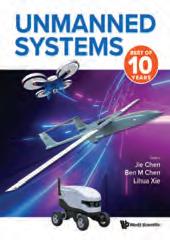
The articles selected in this celebratory volume cover all subjects related to the development of automatic machine systems in unmanned hardware platforms (aerial, ground, underwater and unconventional platforms), unmanned software systems, energy systems, modelling and control, communications systems, computer vision systems, sensing and information processing, navigation and path planning, computing, information fusion, multi-agent systems, mission management, machine intelligence, artificial intelligence, and innovative application case studies.
Readership: Researchers and professionals specialising in autonomous and unmanned systems and vehicles, and related fields in engineering and artificial intelligence.
304pp Aug 2023
978-981-127-331-5 US$148 £135
Series on Machine Consciousness - Vol 5
edited by Antonio Chella (University of Palermo, Italy & ICAR-CNR Palermo, Italy)
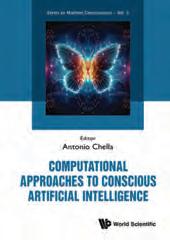
This edited volume consists of 10 chapters that highlight the prospects of machine consciousness and study the subject from several perspectives. The issues are wide-ranging and include topics such as the metaverse, a computational approach to pain and suffering, universal cognitive intelligence, intentional action, the categorization of conscious machines, and more. The volume is designed as a reference guide for researchers, practitioners, and students interested in the intersection of AI and consciousness.
Readership: Researchers, practitioners, students, informed readers interested in the intersection of Artificial Intelligence and Consciousness.
312pp Aug 2023
978-981-127-666-8 US$98 £90
978-981-127-667-5(ebook) US$157 £145
World Scientific Series in Digital Forensics and Cybersecurity - Vol 2 INNOVATIONS IN
edited by Suryadipta Majumdar (Concordia University, Canada), Paria Shirani (University of Ottawa, Canada) & Lingyu Wang (Concordia University, Canada)
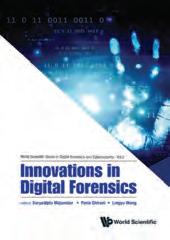
This book presents state-of-the-art techniques to address imminent challenges in digital forensics. In particular, it focuses on cloud forensics, Internet-of-Things (IoT) forensics, and network forensics, elaborating on innovative techniques, including algorithms, implementation details and performance analysis, to demonstrate their practicality and efficacy. The innovations presented in this volume are designed to help various stakeholders with the state-of-the-art digital forensics techniques to understand the real world problems. Lastly, the book will answer the following questions: How do the innovations in digital forensics evolve with the emerging technologies? What are the newest challenges in the field of digital forensics?
Readership: Law enforcement agencies involved with digital forensics, industry practitioners in digital forensics, academic and industry researchers in cybersecurity and forensics, undergraduate and graduate students majoring in digital forensics and cybersecurity.
344pp Jul 2023
978-981-127-319-3 US$138 £125

by Guanghui Zhao (Guizhou University of Finance and Economics, China)
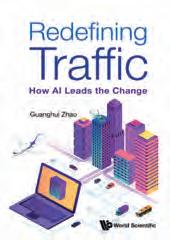
This book looks at the impact of AI and how it has transformed transportation in the form of Smart Traffic Management Systems in a world of unmanned systems and autonomous machines. The book explores the problems faced in air, sea and land transport and traffic. It looks into Unmanned Aerial Vehicles (UAVs), autonomous and remotely-operated ships, intelligent port management systems, and modern urban railway systems.
Readership: Researchers, engineers, and technical personnel specialising in intelligent traffic, artificial intelligence, big data, and the Internet of things industry.
304pp Jul 2023
978-981-124-974-7 US$98 £90
978-981-124-975-4(ebook) US$157 £145
edited by Yang-Hui He (London Institute for Mathematical Sciences, UK & Merton College, University of Oxford, UK & City, University of London, UK & Nankai University, China)
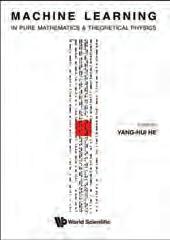
The aim of this book, a first of its kind, is to collect research and survey articles from experts in this emerging dialogue between theoretical mathematics and machine learning. It does not dwell on the well-known multitude of mathematical techniques in deep learning, but focuses on the reverse relationship: how machine learning helps with mathematics. Taking a panoramic approach, the topics range from combinatorics to number theory, and from geometry to quantum field theory and string theory. Aimed at PhD students as well as seasoned researchers, each self-contained chapter offers a glimpse of an exciting future of this symbiosis.
Readership: Researchers in mathematics, theoretical physics, and machine learning, interested in their interactions. Students curious about how AI can help with research in mathematics.
420pp Jul 2023
978-1-80061-369-0 US$148 £135
978-1-80061-370-6(ebook) US$237 £220
ALGEBRA TOOLS FOR DATA MINING
2nd Edition by Dan A Simovici (University of Massachusetts Boston, USA & Dana-Farber Cancer Institute, USA)

This updated compendium provides the linear algebra background necessary to understand and develop linear algebra applications in data mining and machine learning. Basic knowledge and advanced new topics (spectral theory, singular values, decomposition techniques for matrices, tensors and multidimensional arrays) are presented together with several applications of linear algebra (k-means clustering, biplots, least square approximations, dimensionality reduction techniques, tensors and multidimensional arrays). The useful reference text includes more than 600 exercises and supplements, many with completed solutions and MATLAB applications.
Readership: Researchers, professionals, academics and graduate students in pattern recognition/image analysis, AI, machine learning and databases.
1004pp Jul 2023
978-981-127-033-8 US$228 £210
978-981-127-034-5(ebook) US$365 £335
Series on Deep Learning Neural Networks - Vol 1
Methods and Applications by Yuanyuan Chen (Sichuan University, China), Jie Zhong (University of Electronic Science and Technology of China, China) & Zhang Yi (Sichuan University, China)


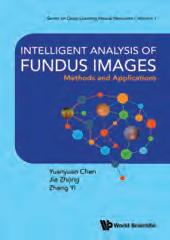
This comprehensive compendium designs deep neural network models and systems for intelligent analysis of fundus imaging. In response to several blinding fundus diseases such as Retinopathy of Prematurity (ROP), Diabetic Retinopathy (DR) and Macular Edema (ME), different image acquisition devices and fundus image analysis tasks are elaborated. From the actual fundus disease analysis tasks, various deep neural network models and experimental results are constructed and analyzed. For each task, an actual system for clinical application is developed.
Readership: Researchers, professionals, academics and graduate students in neural networks and machine learning. This useful reference text provides theoretical and experimental reference basis for AI researchers, system engineers of intelligent medicine and ophthalmologists.
248pp Jul 2023
978-981-127-036-9 US$88 £80
978-981-127-037-6(ebook) US$141 £130
Series on Computers and Operations Research - Vol 10 ANALYSIS, CRYPTOGRAPHY AND INFORMATION SCIENCE
edited by Nicholas J Daras (Hellenic Military Academy, Greece), Panos M Pardalos (University of Florida, USA) & Michael Th Rassias (Hellenic Military Academy, Greece)

This compendium focuses on self-contained presentations of various developments in mathematical analysis, cryptography and information science. The volume features both original research and survey papers contributed by experts from the international community. The book has a strong interdisciplinary flavor and features the most recent developments in the topics treated.
Readership: Researchers, professionals, academics, and graduate students in information sciences, digital security, computer maths & science and theoretical computer science.
284pp Jul 2023
978-981-127-191-5 US$98 £90
978-981-127-192-2(ebook) US$157 £145












From Technology to Applications by Hequan Wu (China Information and Communication Technology Group, China) & Weimin Zheng (Tsinghua University, China)
This comprehensive book introduces what big data is, big data processing systems, big data management technologies, and big data analysis methods in an easy-to-understand language. It explains the specific applications of big data in smart government affairs, economic development, and the improvement of people’s livelihood and welfare.
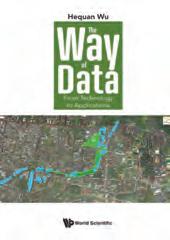
Readership: Researchers, professionals, academics, and graduate students in Databases/Info Sciences, Digital Security and AI.
200pp May 2023
978-981-125-007-1
US$88 £80
978-981-125-008-8(ebook) US$141 £130
by George Chapline (Lawrence Livermore National Laboratory, USA)
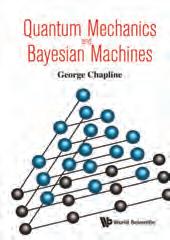
This compendium brings together the fields of Quantum Computing, Machine Learning, and Neuromorphic Computing. It provides an elementary introduction for students and researchers interested in quantum or neuromorphic computing to the basics of machine learning and the possibilities for using quantum devices for pattern recognition and Bayesian decision tree problems. The volume also highlights some possibly new insights into the meaning of quantum mechanics, for example, why a description of Nature requires probabilistic rather than deterministic methods.
Readership: Researchers, academics, professionals and graduate students in pattern recognition/image analysis, machine learning, quantum mechanics and general applied maths.
196pp May 2023
978-981-3232-46-4 US$78 £70
978-981-3232-47-1(ebook) US$125 £115
A Deep Learning Revolution edited by Alok Choudhary (Northwestern University, USA), Geoffrey Fox (University of Virginia, USA) & Tony Hey (Rutherford Appleton Laboratory, UK)
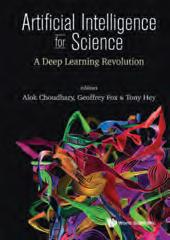
This unique collection introduces AI, Machine Learning (ML), and deep neural network technologies leading to scientific discovery from the datasets generated both by supercomputer simulation and by modern experimental facilities. Huge quantities of experimental data come from many sources — telescopes, satellites, gene sequencers, accelerators, and electron microscopes, including international facilities such as the Large Hadron Collider (LHC) at CERN in Geneva and the ITER Tokamak in France. These sources generate many petabytes moving to exabytes of data per year. Extracting scientific insights from these data is a major challenge for scientists, for whom the latest AI developments will be essential.
Readership: Researchers, professionals, academics, and graduate students in AI/machine learning, neural networks, data science, and science and engineering. The latter areas include astronomy, climate, energy, environment, health, life sciences, materials, particle physics, looking at theory, observation, and the design, construction, and control of experimental facilities.
804pp Apr 2023
978-981-126-566-2 US$148 £135
978-981-126-567-9(ebook) US$237 £220
Real-Time Data for Dynamic System Analysis and Prediction
by Xiaolin Hu (Georgia State University, USA)
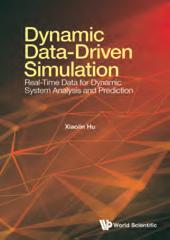
This comprehensive book systematically introduces Dynamic Data Driven Simulation (DDDS) as a new simulation paradigm that makes real-time data and simulation model work together to enable simulation-based prediction/analysis. The text is significantly dedicated to introducing data assimilation as an enabling technique for DDDS. While data assimilation has been studied in other science fields (e.g., meteorology, oceanography), it is a new topic for the modeling and simulation community.
Readership: Researchers, professionals, academics and graduate students in AI, mathematical modeling and industrial engineering.
328pp Apr 2023
978-981-126-717-8 US$108 £100
978-981-126-718-5(ebook) US$173 £160
Theories and Practices
by Lu Cheng (University of Illinois at Chicago, USA) & Huan Liu (Arizona State University, USA)

This book introduces a unified perspective of Socially Responsible AI to help bridge conceptual AI principles to responsible AI practice. It begins with an interdisciplinary definition of socially responsible AI and the AI responsibility pyramid. Existing efforts seeking to materialize the mainstream responsible AI principles are then presented. The book also discusses how to leverage advanced AI techniques to address the challenging societal issues through Protecting, Informing, and Preventing, and concludes with open problems and challenges.
Readership: Undergraduate & graduate students in AI, Machine Learning, Data Science, and Computer Science courses, and AI researchers, AI technologists, researchers, and practitioners from other disciplines who would like to contribute to making AI socially responsible with their expertise.
196pp Jun 2023
978-981-126-662-1
US$78 £70
978-981-126-663-8(ebook) US$125 £115
4th Edition by Dana Richards (George Mason University, USA) & Henry Hamburger (George Mason University, USA)
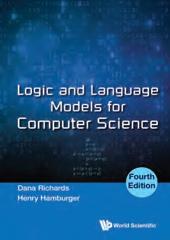
This unique compendium highlights the theory of computation, particularly logic and automata theory. Special emphasis is on computer science applications including loop invariants, program correctness, logic programming and algorithmic proof techniques.
This innovative volume differs from standard textbooks, by building on concepts in a different order, using fewer theorems with simpler proofs. It has added many new examples, problems and answers. It can be used as an undergraduate text at most universities.
Readership: Researchers, professionals, academics, and graduate students in theoretical computer science.
496pp Mar 2023
978-981-126-066-7 US$118 £110
978-981-126-067-4(ebook) US$189 £175


by Ömer Eğecioğlu (University of California at Santa Barbara, USA), Sandi Klavžar (University of Ljubljana, Slovenia) & Michel Mollard (CNRS Université Grenoble Alpes, France)
Fibonacci Cubes have been an extremely popular area of research since the 1990s.

This unique compendium features the state of research into Fibonacci Cubes. It expands the knowledge in graph theoretic and combinatorial properties of Fibonacci Cubes and their variants.
By highlighting various approaches with numerous examples, it provides a fundamental source for further research in the field. This useful reference text surely benefits advanced students in computer science and mathematics and serves as an archival record of the current state of the field.
Readership: Researchers, professionals, academics and graduate students in theoretical computer science, graph theory and combinatorics.
304pp Mar 2023
978-981-126-903-5 US$98 £90
978-981-126-915-8(ebook) US$157 £145
A Top-Down Approach by Rodney R Howell (Kansas State University, USA)
This comprehensive compendium provides a rigorous framework to tackle the daunting challenges of designing correct and efficient algorithms. It gives a uniform approach to the design, analysis, optimization, and verification of algorithms. The volume also provides essential tools to understand algorithms and their associated data structures.
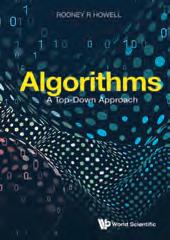
This useful reference text describes a way of thinking that eases the task of proving algorithm correctness. Working through a proof of correctness reveals an algorithm’s subtleties in a way that a typical description does not. Algorithm analysis is presented using careful definitions that make the analyses mathematically rigorous.
Readership: Researchers, professionals, academics, undergraduate and graduate students in theoretical computer science.
612pp Feb 2023
978-981-126-383-5 US$138 £125
978-981-126-384-2(ebook) US$221 £205
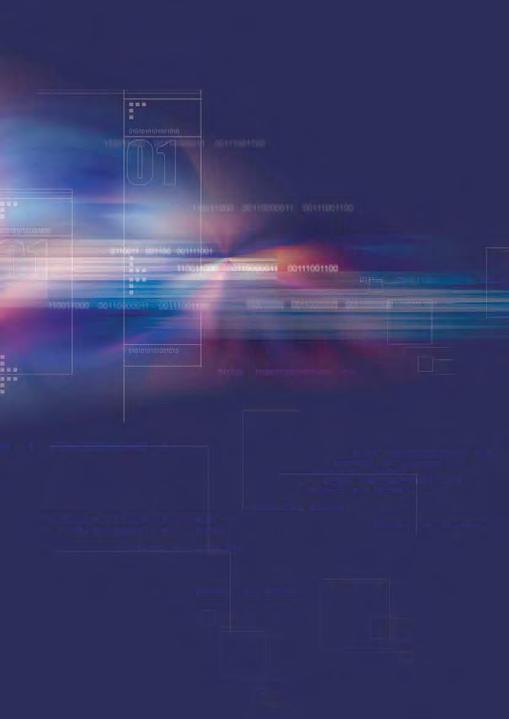









































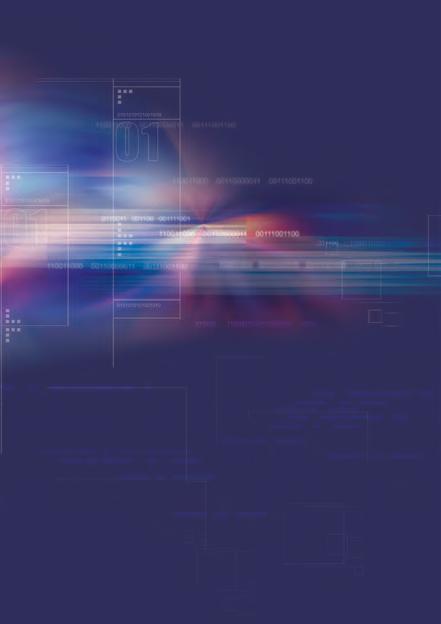






















For a free institutional trial or subscribe to these journals, please contact us at sales@wspc.com
INTERNATIONAL JOURNAL OF PATTERN RECOGNITION AND ARTIFICIAL INTELLIGENCE (IJPRAI) https://www.worldscientific.com/ijprai
IMPACT FACTOR: 0.9
Editors-in-Chief: Xiaoyi Jiang (University of Münster, Germany, Frank Shih (New Jersey Institute of Technology, USA) & Patrick S P Wang (Northeastern University, USA)
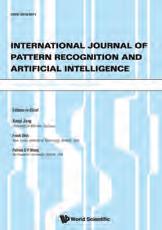
This journal publishes both applications and theory-oriented articles on new developments in the fields of pattern recognition and artificial intelligence, and is of interest to both researchers in industry and academia. From the beginning, there has always been a close relationship between the disciplines of pattern recognition and artificial intelligence. The recognition and understanding of sensory data like speech or images, which are major concerns in pattern recognition, have always been considered as important subfields of artificial intelligence. On the other hand, topics like knowledge representation, inference, search or learning that belong to the center of artificial intelligence, have constantly attracted the attention of researchers working in pattern recognition.
Abstracting/Indexing : Academic OneFile | Academic Search Complete/ Elite/ Premier | Baidu | CNKI Scholar | CnpLINKer | CompuMath Citation Index ® | Computer & Information Systems Abstracts | Computer Abstracts | CrossRef | Current Contents® Engineering, Computing and Technology | Ebsco Business Source Complete | Ebsco Computer & Applied Science Complete | Ebsco Discovery Service | EBSCO Electronic Journal Service (EJS) | Ebsco Science & Technology Collection | ExLibris Primo Central | Google Scholar | io-port.net | ISI Alerting Services | J-Gate | Journal Citation Reports/Science Edition | Naver | NSTL - National Science and Technology Libraries | OCLC WorldCat® | ProQuest Technology Collection (Advanced Technologies Database with Aerospace) | Computer & Information Systems Abstracts | Science Citation Index Expanded | Scopus | The Summon® Service.
TOOLS (IJAIT)
https://www.worldscientific.com/ijait
IMPACT FACTOR: 1.0
Editors-in-Chief: Dr. I. Hatzilygeroudis (University of Patras, Greece) & Jeffrey J P Tsai (Asia University, Taiwan)
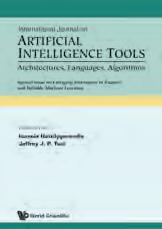
The journal provides an interdisciplinary forum in which AI scientists and professionals can share their research results and report new advances on AI tools or tools that use AI. Topics covered by IJAIT include but are not limited to: AI in Bioinformatics, AI for Service Engineering, AI for Software Engineering, AI for Ubiquitous Computing, AI for Web Intelligence Applications, AI Parallel Processing Tools (hardware/software), AI Programming Languages, AI Tools for CAD and VLSI Analysis/Design/ Testing, AI Tools for Computer Vision and Speech Understanding, AI Tools for Multimedia, Cognitive Informatics, Data Mining and Machine Learning Tools, Heuristic and AI Planning Strategies and Tools, Image Understanding, Integrated/Hybrid AI Approaches, Intelligent System Architectures, Knowledge-Based/Expert Systems, Knowledge Management and Processing Tools, Knowledge Representation Languages, Natural Language Understanding, Neural Networks for AI, Object-Oriented Programming for AI, Reasoning and Evolution of Knowledge Bases, Self-Healing and Autonomous Systems, and Software Engineering for AI.
Abstracting/Indexing: Academic OneFile | Academic Search Complete/ Elite/ Premier | Baidu | Business Source Complete | CNKI | CnpLINKer | CompuMath Citation Index® | Compendex | Current Contents®Engineering, Computing and Technology | DBLP Computer Science Bibliography | Ebsco Discovery Service | EBSCO Electronic Journal Service (EJS) | ExLibris Primo Central | Google Scholar | INSPEC | ISI Alerting Services | J-Gate | Naver | NSTL - National Science and Technology Libraries | OCLC WorldCat® | Science Citation Index Expanded | Scopus | The Summon® Service.
INTERNATIONAL JOURNAL OF COMPUTATIONAL METHODS (IJCM)
https://www.worldscientific.com/ijcm IMPACT FACTOR: 1.4
Chief Editor G R Liu (University of Cincinnati, USA)

The purpose of this journal is to provide a unique forum for the fast publication and rapid dissemination of original research results and innovative ideas on the state-of-the-art on computational methods. The methods should be innovative and of high scholarly, academic and practical value.
The journal is devoted to all aspects of modern computational methods and the articles can involve theory, algorithm, programming, coding, numerical simulation and/or novel application of computational techniques to problems in engineering, science, and other disciplines related to computations. The journal places a great emphasis on creativity, novelty and innovation of computational methods. It aims to become the major platform that archives the history of the technical development of new generations of computational methods. Abstracting/Indexing: Academic OneFile | Baidu | CNKI | CnpLINKer | Compendex | Computer & Information Systems Abstracts | Ebsco Discovery Service | EBSCO Electronic Journal Service (EJS) | ExLibris Primo Central | Google Scholar | INSPEC | J-Gate | Journal Citation Reports/Science Edition | Naver | NSTL - National Science and Technology Libraries | OCLC WorldCat® | Science Citation Index Expanded) | Scopus | The Summon® Service | Zentralblatt MATH.
https://www.worldscientific.com/ijig
IMPACT FACTOR: 0.8
Editors-in-Chief: David Zhang (Hong Kong Polytechnic University, Hong Kong) & Yong Xu (Harbin Institute of Technology Shenzhen, China)
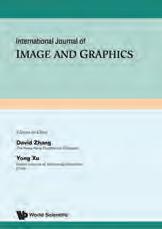
This journal will emphasize on efficient and effective image and graphics technologies and systems. This journal covers the following research and application issues:
Image Processing (Image acquisition & storage • Image pre-processing
• Image coding and transmission • Image indexing & retrieval) , Image Analysis and Understanding ( Image segmentation & measurement • Texture & motion analysis • Image matching and scene interpretation • 3-D modeling),
Pattern Recognition Application (Statistical, structural & neural approaches • Character, speech, image & video applications
• Biometrics technologies & system),
Computer Vision (Active, real-time & stereo computer vision • VLSI image model, algorithm & architecture • Multi-modal image systems)
Graphics Modeling, Rendering and Animation (Graphics algorithms
• Modeling methods • Rendering algorithms • Animation), Visualization (Virtual Reality & Virtual Environment • Augmented Reality • Media immersion),
Multimedia Systems and Techniques ( Multimedia algorithms
• Multimedia communication and CSCW • Multimedia database
• Multimedia systems), Graphics User Interface ( User interface management system • Multi-agent/Artificial life/Intelligent agent • Multi-modal user interface), Image and Graphics Applications ( Medical & bio-medical
• Telecommunication & remote sensing • Document & industrial
• Security (internet, digital watermaking,?))
Abstracting/Indexing: Academic OneFile | Baidu | CNKI | CnpLINKer | Computer & Information Systems Abstracts | DBLP Computer Science Bibliography | Ebsco Discovery Service | EBSCO Electronic Journal Service (EJS) | Emerging Sources Citation Index(ESCI) | ExLibris Primo Central | Google Scholar | io-port.net | J-Gate | Naver | NSTL - National Science and Technology Libraries | OCLC WorldCat® | Scopus | The Summon® Service | Wang Fang Data.
IMPACT FACTOR: 0.5


(IJCGA)
https://www.worldscientific.com/ijcga
Editors-in-Chief
Der-Tsai Lee (Academia Sinica, Taiwan)
Jinhui Xu (State University of New York at Stony Brook, USA)
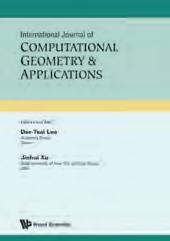
A bimonthly journal devoted to the field of computational geometry within the framework of design and analysis of algorithms. Emphasis is placed on the computational aspects of geometric problems that arise in various fields of science and engineering including computer-aided geometry design (CAGD), computer graphics, constructive solid geometry (CSG), operations research, pattern recognition, robotics, solid modelling, VLSI routing/ layout, and others. Research contributions ranging from theoretical results in algorithm design — sequential or parallel, probabilistic or randomized algorithms — to applications in the above-mentioned areas are welcome. Research findings or experiences in the implementations of geometric algorithms, such as numerical stability, and papers with a geometric flavour related to algorithms or the application areas of computational geometry are also welcome.
Abstracting/Indexing : Academic OneFile | Academic Search
Complete/ Elite/ Premier | Baidu | CNKI Scholar | CnpLINKer | Computer Abstracts | CrossRef | DBLP Computer Science
Bibliography | Ebsco Computer & Applied Science Complete | Ebsco Discovery Service | EBSCO Electronic Journal Service (EJS) | Ebsco Science & Technology Collection | ExLibris Primo Central | Google Scholar | INSPEC | J-Gate | Mathematical Reviews® (MR) | Naver | NSTL - National Science and Technology Libraries | OCLC WorldCat® | ProQuest Computer & Information Systems Abstracts | ProQuest Technology Collection | Scopus | The Summon® Service | Zentralblatt MATH.s
(JMRR) https://www.worldscientific.com/jmrr
Editor-in-Chief: Jaydev P. Desai (Georgia Tech, USA)
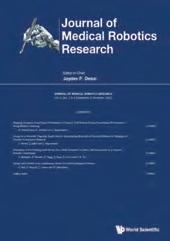
Medical robotics has been progressively revolutionizing treatment for at least the past two decades. The Journal of Medical Robotics Research (JMRR) invites fundamental contributions to all areas of medical robotics including clinical evaluation studies. The journal is primarily aimed towards bringing the scientific and technological developments as well as clinical evaluation studies in the area of medical robotics to a wider robotics and clinical audience.
Areas of discussion include: • Robot-assisted Surgery • Image-guided Interventions • Rehabilitation Robotics • Assistive Robotics • Surgical simulation • Image-guided Diagnosis and Therapy • Nano-scale and micro-scale Interventions • Telesurgery • Haptics for Medical Robotics • Smart instrumented tools for surgery • Surgical Navigation • Surgical Workflow• Wearable Rehabilitation Systems
Abstracting/Indexing: Baidu | CNKI Scholar | CnpLINKer | CrossRef | Ebsco Discovery Service | EBSCO Electronic Journal Service (EJS) | Embase | ExLibris Primo Central | Google Scholar | J-Gate | Naver | NSTL - National Science and Technology Libraries | OCLC WorldCat® | Proquest Computer & Information Systems Abstracts | ProQuest Computer & Information Systems Abstracts | ProQuest Nursing & Allied Health Database | ProQuest Technology Collection (Advanced Technologies Database with Aerospace) | Scopus | The Summon® Service.
https://www.worldscientific.com/ppl
Editor-in-Chief: A Adamatzky (University of the West of England, UK)
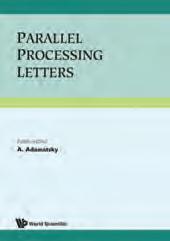
Parallel Processing Letters (PPL) aims to rapidly disseminate results on a worldwide basis in the field of parallel processing in the form of short papers. It fills the need for an information vehicle which can convey recent achievements and further the exchange of scientific information in the field. This journal has a wide scope and topics covered include:
• design and analysis of parallel and distributed algorithms
• theory of parallel computation
• parallel programming languages
• parallel programming environments
• parallel architectures and VLSI circuits
• unconventional computational problems (e.g., time-varying variables, interacting variables, time-varying complexity)
• unconventional computational paradigms (e.g., biomolecular computing, chemical computing, quantum computing)
• computing in nature (e.g., photosynthesis, plant respiration, bacterial communication)
• nature-inspired algorithms (e.g., genetic algorithms, neural networks, swarm intelligence)
Abstracting/ Indexing : Academic OneFile | Academic Search Complete/ Elite/ Premier | Applied Science & Technology Source Ultimate | Baidu | Business Source Complete | CNKI | CnpLINKer | Compendex | Computer & Applied Science Complete | CrossRef | DBLP Computer Science Bibliography | Ebsco Discovery Service | EBSCO Electronic Journal Service (EJS) | Emerging Sources Citation Index (ESCI) | Engineering Source (Ebsco) | ExLibris Primo Central | Google Scholar | io-port.net | J-Gate | Mathematical Reviews®(MR) | Naver | NSTL - National Science and Technology Libraries | OCLC WorldCat® | Scopus | The Summon® Service | Zentralblatt MATH.
INTERNATIONAL JOURNAL OF FOUNDATIONS OF COMPUTER SCIENCE (IJFCS) https://www.worldscientific.com/ijfcs IMPACT FACTOR: 0.6
Editor-in-Chief: O H Ibarra (University of California, Santa Barbara, USA)

The theoretical and mathematical aspects covered include: Algebraic theory of computing and formal systems, Algorithm and system implementation, issues, Approximation, probabilistic, and randomized algorithms, Automata and formal languages, Automata and formal languages, Automated deduction, Combinatorics and graph theory, Complexity theory, Computational biology and bioinformatics, Cryptography, Database theory, Data structures, Design and analysis of algorithms, DNA computing, Foundations of computer security, Foundations of high-performance computing, Logic in computer science, Foundations of high-performance computing, Logic in computer science, Model checking and computer-aided verification, Models of computation, Quantum computing, Semantics, concurrency, and type theory, Theories and models of internet computing, Theory of learning and inductive inference, Theory of parallel and distributed computing, Wireless networks and mobile computing.
Abstracting/Indexing: Academic OneFile | Baidu | Business Source Complete | CNKI | CnpLINKer | : CompuMath Citation Index ® | Computer Abstracts | Current Contents®/Engineering, Computing & Technology | DBLP Computer Science Bibliography | Ebsco Discovery Service | EBSCO Electronic Journal Service (EJS) | ExLibris Primo Central | Google Scholar | INSPEC | ISI Alerting Services | J-Gate | Journal Citation Reports/Science Edition | Mathematical Reviews®(MR) | MathSciNet | Naver | NSTL - National Science and Technology Libraries | OCLC WorldCat® | Science Citation Index Expanded | Scopus | The Summon® Service Submit your paper to


https://www.worldscientific.com/join
IMPACT FACTOR: 0.5
Editor-in-Chief: Eddie Cheng (Oakland University, USA)
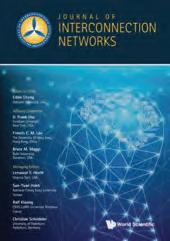
An international scientific journal dedicated to advancing the state-of-the-art of interconnection networks. The journal addresses all aspects of interconnection networks including their theory, analysis, design, implementation and application, and corresponding issues of communication, computing and function arising from (or applied to) a variety of multifaceted networks. Interconnection problems occur at different levels in the hardware and software design of communicating entities in integrated circuits, multiprocessors, multicomputers, and communication networks as diverse as telephone systems, cable network systems, computer networks, mobile communication networks, satellite network systems, the Internet and biological systems.
Abstracting/Indexing: Academic Search Complete/ Elite/ Premier | Baidu | CNKI Scholar | CnpLINKer | Compendex | CrossRef | DBLP Computer Science Bibliography | Ebsco Business Source Complete | Ebsco Computer and Applied Science Complete | Ebsco Discovery Service | EBSCO Electronic Journal Service (EJS) | Emerging Sources Citation Index (ESCI)| Engineering Source (Ebsco) | ExLibris Primo Central | Google Scholar | io-port.net | J-Gate | Naver | NSTL - National Science and Technology Libraries | OCLC WorldCat® | ProQuest Technology Collection | Scopus | The Summon® Service.
OF INFORMATION TECHNOLOGY & DECISION MAKING (IJITDM)
https://www.worldscientific.com/ijitdm
IMPACT FACTOR: 2.5
Editor-in-Chief: Yong Shi
(University of Nebraska at Omaha, USA)
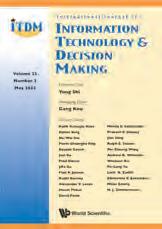
Managing Editor: Gang Kou (Southwestern University of Finance and Economics, China)
This journal provides a global forum for exchanging research findings and case studies which bridge the latest information technology and various decision-making techniques. It promotes how information technology improves decision techniques as well as how the development of decision-making tools affects the information technology era. The journal is peer-reviewed and publishes both highquality academic (theoretical or empirical) and practical papers in the broad ranges of information technology related topics.
Abstracting/Indexing: ABDC Journal Quality List by Australian Business Deans Council | Academic OneFile | Baidu | Cabell | CNKI Scholar | CnpLINKer | Compendex | CompuMath Citation Index® | CrossRef | DBLP Computer Science Bibliography | Ebsco Business Source Complete | Ebsco Computer & Applied Science Complete | Ebsco Discovery Service | Ebsco Electronic Journal Service (EJS) | Ebsco Science & Technology Collection | ExLibris Primo Central | Google Scholar | INSPEC | ISI Alerting Services | J-Gate | Journal Citation Reports/Science Edition | Naver | NSTL - National Science and Technology Libraries | OCLC WorldCat® | ProQuest Computer & Information Systems Abstracts | ProQuest Technology Collection (Advanced Technologies Database with Aerospace) | RePErC | Science Citation Index Expanded | Scopus | The Summon® Service.
https://www.worldscientific.com/ijns
IMPACT FACTOR: 6.6
Editor-in-Chief: Hojjat Adeli (The Ohio State University, USA)
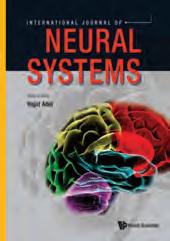
The International Journal of Neural Systems is a bimonthly peer-reviewed journal which covers information processing in natural and artificial neural systems. The journal presents a fresh, undogmatic attitude towards this multi-disciplinary field, aiming to be a forum for novel ideas and improved understanding of collective and cooperative phenomena in systems with computational capabilities.
Abstracting/Indexing: Academic OneFile | Academic Search Complete/ Elite/ Premier | Applied Science & Technology Source Ultimate | Baidu | CNKI | CnpLINKer | Compendex | CompuMath Citation Index | Computer Abstracts | CrossRef | CSA Neurosciences Abstracts | Current Contents ® /Engineering, Computing, and Technology | DBLP Computer Science Bibliography | Ebsco Discovery Service | EBSCO Electronic Journal Service (EJS) | ExLibris Primo Central | Google Scholar | INSPEC | io-port.net | ISI Alerting Services | J-Gate | Journal Citation Reports/Science Edition | Naver | NSTL - National Science and Technology Libraries | OCLC WorldCat® | ProQuest SciTech Premium Collection | PubMed | Science & Technology Collection | Science Citation Index Expanded | Scopus | The Summon® Service | WanFang Data.
INTERNATIONAL JOURNAL OF COMPUTATIONAL INTELLIGENCE AND APPLICATIONS (IJCIA) https://www.worldscientific.com/ijcia
IMPACT FACTOR: 0.8
Editor-in-Chief: Brijesh Verma (Griffith University, Australia)
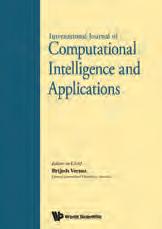
A refereed journal dedicated to the theory and applications of computational intelligence (artificial neural networks, fuzzy systems, evolutionary computation and hybrid systems). The main goal of this journal is to provide the scientific community and industry with a vehicle whereby ideas using two or more conventional and computational intelligence based techniques could be discussed.
The IJCIA welcomes original works in areas such as neural networks, fuzzy logic, evolutionary computation, pattern recognition, hybrid intelligent systems, symbolic machine learning, statistical models, image/audio/video compression and retrieval. The IJCIA greatly encourages new ideas, combining two or more areas, such as neuro-fuzzy, neuro-symbolic, neuro-evolutionary, neuro-symbolic, neuro-pattern recognition, fuzzy-evolutionary, evolutionary-symbolic, fuzzy-evolutionary, evolutionary-symbolic, fuzzy-symbolic, etc. to be submitted.
Abstracting/Indexing: Academic OneFile | Academic Search Complete/ Elite/ Premier | Applied Science & Technology Source Ultimate | Baidu | CNKI | CnpLINKer | Compendex | CompuMath Citation Index | Computer Abstracts | CrossRef | CSA Neurosciences Abstracts | Current Contents®/Engineering, Computing, and Technology | DBLP Computer Science Bibliography | Ebsco Discovery Service | EBSCO Electronic Journal Service (EJS) | ExLibris Primo Central | Google Scholar | INSPEC | io-port.net | ISI Alerting Services | J-Gate | Journal Citation Reports/Science Edition | Naver | NSTL - National Science and Technology Libraries | OCLC WorldCat ® | ProQuest SciTech Premium Collection | PubMed | Science & Technology Collection | Science Citation Index Expanded | Scopus | The Summon® Service | WanFang Data.


(IJCIS)
https://www.worldscientific.com/ijcis
IMPACT FACTOR: 0.5
Editors-in-Chief
Heiko Ludwig (IBM Almaden Research Center, USA) & J Yang (Macquarie University, Australia)
Advisory Editor
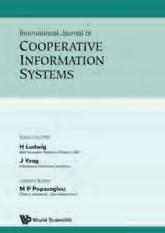
M P Papazoglou (Tilburg University, The Netherlands)
This journal addresses the intricacies of cooperative work in the framework of distributed interoperable information systems. It provides a forum for the presentation and dissemination of research covering all aspects of CIS design, requirements, functionality, implementation, deployment, and evolution. IJCIS will publish papers describing original ideas and new results, on topics that include, but are not limited to: CIS Principles, Information Agents, Large-Scale Knowledge Bases for CIS, Theoretical Frameworks and Formal Methods for CIS, CIS Implementation Techniques, Integration Challenges, Information Modelling and Reasoning techniques for CISs, Advanced CIS Programming, CIS Evolution, Re-Engineering, Business Process Management Systems.
Abstracting/Indexing: Academic OneFile | Baidu | CNKI Scholar | CnpLINKer | CompuMath Citation Index® | Computer & Information Systems Abstracts | CrossRef | Current Contents® Engineering, Computing and Technology | DBLP Computer Science Bibliography | Ebsco Business Source Complete | Ebsco Computer and Applied Science Complete | Ebsco Discovery Service| Ebsco Electronic Journal Service (EJS) | | ExLibris Primo Central | Google Scholar | INSPEC | io-port.net | ISI Alerting Services | J-Gate | Journal Citation Reports/ Science Edition | Naver | NSTL - National Science and Technology Libraries | OCLC WorldCat® | ProQuest Technology Collection | Science Citation Index Expanded | Scopus | The Summon® Service.
UNMANNED SYSTEMS (US) https://www.worldscientific.com/us
Managing Editor-in-Chief
Jie Chen (Tongji University, China)
Co-Editors-in-Chief
IMPACT FACTOR: 3.0
Ben M. Chen (Chinese University of Hong Kong, China)
Lihua Xie (Nanyang Technological University, Singapore)
Unmanned Systems (US) aims to cover all subjects related to the development of automatic machine systems, which include advanced technologies in unmanned hardware platforms (aerial, ground, underwater and unconventional platforms), unmanned software systems, energy systems, modeling and control, communications systems, computer vision systems, sensing and information processing, navigation and path planning, computing, information fusion, multi-agent systems, mission management, machine intelligence, artificial intelligence, and innovative application case studies.
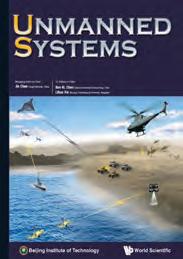
Abstracting/Indexing: Academic OneFile | Academic Search Complete (Ebsco) | Baidu | CNKI | CnpLINKer | CrossRef | Ebsco Discovery Service | EBSCO Electronic Journal Service (EJS) | Emerging Sources Citation Index (ESCI) | ExLibris Primo Central | Google Scholar | J-Gate | Naver | NSTL - National Science and Technology Libraries | OCLC WorldCat® | ProQuest Computer & Information Systems Abstracts | ProQuest Technology Collection (Advanced Technologies Database with Aerospace) | ProQuest Technology Collection (Materials Science & Engineering Database) | Science Citation Index Expanded (SCIE) | Scopus | The Summon® Service.
JOURNAL OF THEORETICAL AND COMPUTATIONAL ACOUSTICS (JTCA) https://www.worldscinet.com/jtca
IMPACT FACTOR: 1.3
Co-Editors-In-Chief
Steffen Marburg (Technical University of Munich, Germany) & Sean F. Wu (Wayne State University, USA)
The aim of this journal is to provide an international forum for the dissemination of the state-of-the-art information in the field of Computational Acoustics.

Topics covered by this journal include research and tutorial contributions in OCEAN ACOUSTICS (a subject of active research in relation with sonar detection and the design of noiseless ships), SEISMO-ACOUSTICS (of concern to earthquake science and engineering, and also to those doing underground prospection like searching for petroleum), AEROACOUSTICS (which includes the analysis of noise created by aircraft), COMPUTATIONAL METHODS, and SUPERCOMPUTING. In addition to the traditional issues and problems in computational methods, the journal also considers theoretical research acoustics papers which lead to largescale scientific computations.
Abstracting/Indexing: Academic OneFile | Academic Search Complete/ Elite/ Premier | Baidu | CNKI Scholar | CnpLINKer | CompuMath Citation Index® | CrossRef | CSA Aquatic Sciences and Fisheries Abstracts (ASFA) | CSA Meteorological & Geoastrophysical Abstracts | CSA Oceanic Abstracts | CSA Selected Water Resources Abstracts | Current Contents®Engineering, Computing and Technology | Ebsco Computer & Applied Science Complete | Ebsco Discovery Service | Ebsco Electronic Journal Service (EJS) | Ebsco Engineering Source | Ebsco Science & Technology Collection | ExLibris Primo Central | Google Scholar | ISI Alerting Services | J-Gate | Journal Citation Reports/Science Edition | Mathematical Reviews® (MR) | Naver | NSTL - National Science and Technology Libraries | OCLC WorldCat® | Proquest Computer & Information Systems Abstracts | ProQuest SciTech Premium Collection | Science Citation Index® | Science Citation Index Expanded | Scopus | The Summon® Service | Zentralblatt MATH.
ADVANCES IN DATA SCIENCE AND ADAPTIVE ANALYSIS (ADSAA) https://www.worldscientific.com/adsaa
IMPACT FACTOR: 0.5
Editor-in-Chief: Carson Kai-Sang Leung (University of Manitoba, Canada )
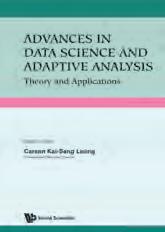
This is an interdisciplinary journal dedicated to report original research results on data analysis methodology developments and their applications, with a special emphasis on the adaptive approaches. The mission of the journal is to elevate data analysis from the routine data processing by traditional tools to a new scientific level, which encourages innovative methods development for data science and its scientific research and engineering applications.
Abstracting/Indexing: Abstracting/Indexing: Academic OneFile | Baidu | CNKI | CnpLINKer | Compendex | Computer & Information Systems Abstracts | CrossRef | DBLP Computer Science Bibliography | Ebsco Discovery Service | EBSCO Electronic Journal Service (EJS) | Emerging Sources Citation Index (ESCI) | ExLibris Primo Central | Google Scholar | J-Gate | Mathematical Reviews® (MR) / MathSciNet® | Naver | NSTL - National Science and Technology Libraries | OCLC WorldCat® | ProQuest Technology Collection (Advanced Technologies Database with Aerospace) | The Summon® Service | Zentralblatt MATH.


INTERNATIONAL JOURNAL OF HUMANOID ROBOTICS (IJHR)
https://www.worldscientific.com/ijhr
Editors-in-Chief
Ming Xie (Nanyang Technological University, Singapore)
Juyang (John) Weng (Michigan State University, USA)
Giulio Sandini (Italian Institute of Technology, Italy)
This journal covers all subjects on the mind and body of humanoid robots. It is dedicated to advancing new theories, new techniques, and new implementations contributing to the successful achievement of future robots which not only imitate human beings, but also serve human beings. While IJHR encourages the contribution of original papers which are solidly grounded on proven theories or experimental procedures, the journal also encourages the contribution of innovative papers which venture into the new, frontier areas in robotics.
https://www.worldscientific.com/gnc
Editors-in-Chief
Haibin Duan & Yingxun Wang (Beihang University, China)
Guidance, Navigation and Contro l (GNC) will report on advances in the understanding and utilization of guidance, navigation and control theories, technologies and systems. The journal serves as a platform for academic exchange by experts, scholars and researchers in these fields. The following subjects are of particular interest to the journal:
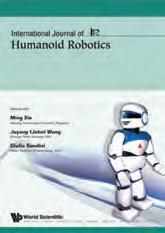
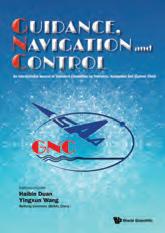
• Modeling, analysis and design of dynamics, control and guidance systems
• Stability, optimization, electronics, avionics, and information processing related to various vehicle systems (marine, ground, aeronautical, and astronautical systems)
• Theoretical and empirical research in guidance, navigation and control technologies
• Application of guidance, navigation and control technologies to real-world problems
https://www.worldscientific.com/ijalp
Editor-in-Chief
Minghui Dong (Institute for Infocomm Research, Singapore)
The aim of the journal is to provide a channel for researchers working on Asian Language Processing to share their highquality work and to promote research in this field. The scope of the journal will include the automatic processing or study of Asian languages on the following aspects: natural language processing, spoken language processing, linguistic study towards language processing, and processing for language education, among other areas.
INTERNATIONAL JOURNAL OF MODELING, SIMULATION, AND SCIENTIFIC COMPUTING (IJMSSC)
https://www.worldscientific.com/ijmssc
IMPACT FACTOR: 0.9
Editors-in-Chief:
Lin Zhang (Beihang University (BUAA), China)
Agostino Bruzzone (Genoa University, Italy)
This is a quarterly journal which deals with the fields of system modeling, simulation and scientific computing. The scope of the journal covers, but is not limited to:
• Modeling theory and methodology for complex systems, system simulation theory and methodology
• Complex applications of high level simulation languages, Multi-parameter Optimization in simulation
• Verification, validation and accreditation of theory and technology
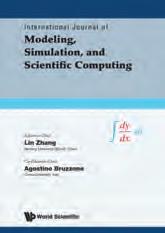
• Finite element methods, finite difference methods, Approximation theory
• Distributed/High-Performance/Pervasive/Grid/Cloud Computing, Bioinformatics/Data-Mining, High Performance simulation technology
• Computational electromagnetics, electrodynamics, fluid dynamics, computational heat, mass, and momentum transfer
• M&S technology of continuous systems/discrete systems/hybrid systems/Intelligent systems, complex systems/open systems/ huge systems
• SBA/virtual prototyping engineering technology
• Simulation language methodology, supporting platforms, application techniques
https://www.worldscientific.com/ijseke
IMPACT FACTOR: 0.6
Editor-in-Chief
Professor S.K. Chang (Knowledge Systems Institute, USA)
This journal intended to serve as a forum for researchers, practitioners, and developers to exchange ideas and results for the advancement of software engineering and knowledge engineering. Three types of papers will be published:

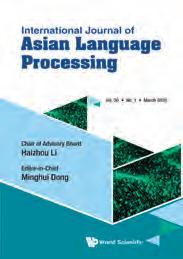
This journal intended to serve as a forum for researchers, practitioners, and developers to exchange ideas and results for the advancement of software engineering and knowledge engineering. The journal publishes papers in the areas of software engineering methods and practices, object-oriented systems, rapid prototyping, software reuse, cleanroom software engineering, stepwise refinement/enhancement, formal methods of specification, ambiguity in software development, impact of CASE on software development life cycle, knowledge engineering methods and practices, logic programming, expert systems, knowledge-based systems, distributed knowledge-based systems, deductive database systems, knowledge representations, knowledgebased systems in language translation & processing, software and knowledge-ware maintenance, reverse engineering in software design, and applications in various domains of interest.
FREE
INTERNATIONAL JOURNAL OF UNCERTAINTY, FUZZINESS AND KNOWLEDGE-BASED SYSTEMS (IJUFKS)
https://www.worldscientific.com/ijufks
Editor-in-Chief: Bernadette Bouchon-Meunier (Sorbonne Université, CNRS, France)
This International Journal is a forum for research on various methodologies for the management of imprecise, vague, uncertain or incomplete information. The aim of the journal is to promote theoretical, methodological or practical works dealing with all kinds of methods to represent and manipulate imperfectly described pieces of knowledge. It is published bimonthly, with worldwide distribution to researchers, engineers, decision-makers, and educators.
https://www.worldscientific.com/ijsc
Editor-in-Chief: Phillip C-Y Sheu (University of California, Irvine, USA)

https://www.worldscientific.com/jaic
Chief and Executive Editors
Antonio Chella (Università degli Studi di Palermo & ICAR-CNR Palermo, Italy), David Gamez (Middlesex University, UK) & Riccardo Manzotti (IULM University, Milan, Italy)


International Journal of Semantic Computing (IJSC) addresses the computing technologies (e.g., artificial intelligence, natural language, software engineering, data and knowledge engineering, computer systems, signal processing, etc.), and their interactions, that may be used to extract or process computational content and descriptions. While some areas of Semantic Computing have appeared as isolated pieces in journals dedicated to individual disciplines, IJSC is a journal that glues these pieces together into an integrated theme with synergetic interactions.
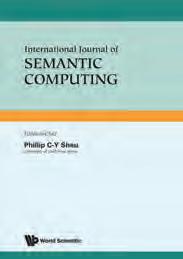
COMPUTATION (NMNC)
https://www.worldscientific.com/nmnc
Managing Editor: Shu-Heng Chen (National Chengchi University, Taiwan)
Recognizing the world is full of vagueness and uncertainty, this journal has chosen three very focused areas of research: i. Mathematics of Uncertainty ii. Economics & Finances iii. Cognitive Science
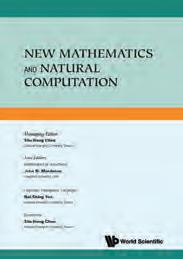
The close cooperation of the above three areas is of paramount importance. This journal strongly encourages the suggestions of any topic within these three general areas of research. The journal has demonstrated there is room for artificial intelligence & modern control theory in contributing solutions to some selected economic problems. We shall continue to explore other possibilities. A new initiative on cognitive science and economics is a good example. Over the years, this journal has published some papers on pattern recognition, image processing, and natural languages vis-a-vis artificial intelligence. We welcome any proposal on worthy new initiatives.
The Journal of Artificial Intelligence and Consciousness (JAIC) will offer a multidisciplinary platform to discuss AI and consciousness in the light of robotics and artificial systems, computational science, psychology, philosophy of mind, ethics, and neuroscience. The aims and scope of the journal are: (i) articles that take inspiration from biological consciousness and/or that explore theoretical issues of consciousness to build robots and AI systems that show forms of functional consciousness; (ii) articles that employ robots and AI systems as tools to model and better understand biological mechanisms of consciousness; (iii) articles that discuss ethical problems emerging or uncovered through the overlap of AI and consciousness, and that investigate the ethical and societal impact of consciousness and the limits of it, and (iv) to pursue the hybridization between the field of AI and the field of consciousness studies.

Abstracting/Indexing: Baidu | CNKI Scholar | CnpLINKer | Computer & Information Systems Abstracts (ProQuest) | CrossRef | Ebsco Discovery Service | EBSCO Electronic Journal Service (EJS) | ExLibris Primo Central | Google Scholar | J-Gate | Naver | NSTL - National Science and Technology Libraries | OCLC WorldCat® | ProQuest Central Technology Research Database (ProQuest) | The Summon® Service | WanFang Data.
JOURNAL OF BIG DATA MINING FOR GLOBAL WARMING (IJBDMGW) https://www.worldscinet.com/ijbdmgw
Editors-In-Chief
Donald Huisingh (University of Tennessee, Knoxville, USA) Zhihua Zhang (Beijing Normal University, China)

Present and future global warming research must be increasingly based on big datasets at terabyte and exabyte scales from diverse sources (e.g. climate, ocean, economy, energy, ecosystem dynamics, industry, agriculture, environment, public’s attitude/ knowledge surveys). The “International Journal of Big Data Mining for Global Warming” is an inter-disciplinary journal dedicated to the publication of high-quality research articles, review articles, letters, case studies and book reviews in all aspects of global warming through traditional mining methods (statistical, spectral, numerical, simulating, LCA, 3E, etc.) and non-traditional mining methods (neural networks, deep learning, cloud computing, etc.) of these big datasets.
Abstracting/Indexing: Baidu | CNKI | CnpLINKer | CrossRef | Ebsco Discovery Service | EBSCO Electronic Journal Service (EJS) | ExLibris Primo Central | Google Scholar | J-Gate | Naver | NSTLNational Science and Technology Libraries | OCLC WorldCat® | The Summon® Service.
FREE access to the selected articles.


A rapid publication open access journal
https://www.worldscientific.com/computing-open
Subject Editors
Ding-Zhu Du (University of Texas at Dallas, USA), Piero Malcovati (University of Pavia, Italy), Emre Salman (Stony Brook University (SUNY), USA), Frank Y. Shih (New Jersey Institute of Technology, USA), Jinlong Shu (East China Normal University, Shanghai, China), Zoran Stamenkovic (IHP GmbH, Germany), Patrick S. P. Wang (Northeastern University, USA) & Tongquan Wei (East China Normal University)
Computing Open is a new fully peer-reviewed, rapid publication, open access, broad scope journal that publishes original research and review articles on all aspects of computer science. The journal is editorially aligned with World Scientific’s collection of highquality and leading computer science journals which are considered essential content by top institutions globally.
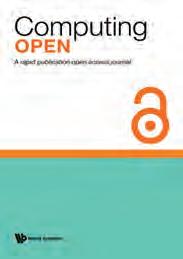
Computing Open focuses on ensuring that all papers published are of high technical quality but allows the scientific community to determine the impact of published work. The editorial process focuses on the technical validity of the research, from methodological, analytical, statistical, and publication ethics.
https://www.worldscientific.com/dmaa
Co-Editors-in-Chief
Ding-Zhu Du (University of Texas at Dallas, USA)
Jinlong Shu (East China Normal University, Shanghai, China)
The aim of this journal is to advance and promote the theory and applications of discrete mathematics, which is a research area in mathematics with applications in advanced science and technology, such as machine learning, blockchain, data science, cloud- computing, social networks, edge computing, wireless communications, etc.
IMPACT FACTOR: 0.6
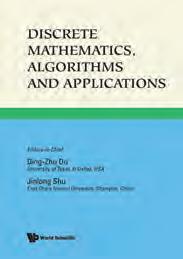
The journal encourages contributions from the three important parts of discrete mathematics, graph theory, combinatorics, and discrete optimization. The first part includes structural graph theory, extremal graph theory, algebraic graph theory, random graphs, and social networks. The second part consists of combinatorial design, combinatorial enumeration, coding theory, combinatorial probabilistic method, etc. The third part includes scheduling, network optimization, integer programming, game theory, algorithm design and analysis, etc.
INTERNATIONAL JOURNAL OF DATA SCIENCE IN THE MATHEMATICAL SCIENCES (IJDSMS)
https://www.worldscientific.com/ijdsms
Editor-in-Chief
Yang-Hui He (University of Oxford, UK)
The aim of this new, highly inter-disciplinary journal is to establish a much-needed platform for experimental mathematicians, both pure and applied, physicists and other experts in theoretical STEM fields, as well as data scientists and computer scientists specializing in machinelearning and artificial intelligence.
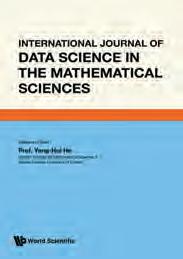
This platform will publish and promote discussion in the following areas: Data in pure mathematics, especially those already freely available online: LMFdB, GrDB, GAP, KnotsDB, etc. and in particular in line with MathSage; Data in applied mathematics, ranging from mathematical biology to theoretical physics; Data Science & Theoretical Physics: especially in relation to the string landscape & others.
An International Journal on Innovative Applied Sciences, Engineering and Biomedical Research https://www.worldscientific.com/iet
Editors-in-Chief
Biomedical: Utkan Demirci (Stanford Univ., USA)
Physics and Engineering: Supriyo Datta (Purdue University, USA)
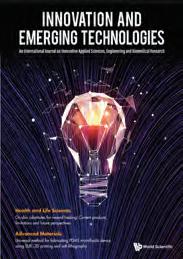
Fashioned as a high-impact, high-visibility, topechelon publication, this new ground-breaking journal - Innovation and Emerging Technologies - will feature the development of cutting-edge new technologies in a broad array of emerging fields of science and engineering. The content will have an applied science and technological slant with a focus on both innovation and application to daily lives. It will cover diverse disciplines such as health and life science, energy and environment, advanced materials, technology-based manufacturing, information science and technology, and marine and transportations technologies.
An Interdisciplinary Scientific Journal on Integration of AI, Robotics and Fundamental Science
https://www.worldscientific.com/ijairr
Editors-in-Chief
Yu Sun (University of South Florida, USA)
Dong Xu (University of Missouri-Columbia, USA)
Xiaorui Zhu (Galaxy Artificial Intelligence and Robotics Research Institute, Singapore)
Artificial Intelligence and Robotics (Abbreviated as AIR) are playing more and more critical roles in many fields. AIR will not only accelerate fundamental scientific research but also empower many paradigm-shift applications. The advancement of AIR will consistently benefit from close cooperation among various disciplines, including mathematics, physics, biology, psychology, and engineering.
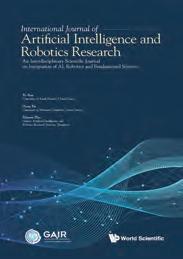


https://www.worldscientific.com/ijmi
Editor-in-Chief
Masato Wakayama (Kyushu University, Japan)
Philip Broadbridge (La Trobe, Australia)
https://www.worldscientific.com/ijssc
Editor-in-Chief
Alexander Zehnder (Nanyang Technological University, Singapore)

The International Journal of Mathematics for Industry is an international, openaccess journal, dedicated to enhancing the interaction between mathematics and industrial applications as a two-way process. It publishes original research articles from authors worldwide that illustrate how, through the utilization of mathematical results, questions about industrial problems including various scientific questions potentially connected to industrial problems are answered to yield new insight for both industry and mathematics. The journal also publishes survey articles that address specific mathematics-forindustry topics from an original perspective.
The International Journal on Smart and Sustainable Cities is a biannual publication which aims to provide a platform for global inter-disciplinary research that is at the nexus of urban science and technology, sustainable development, urban planning and resilience, with a focus on the AsiaPacific region. It accepts high-quality research papers, review papers, insights, and opinions from practitioners and policy makers in, but not limited to, the following topics:
• complexity science for cities

• application of digital humanities and citizen science to address city challenges
• the use of emerging technology such as artificial intelligence, big data, advancements in modelling and visualization, cloud computing, and/or Internet of Things to enhance liveability, sustainability, restorative, regenerative and/or wellbeing benefits in urban systems such as food, energy, water, etc.
• the development of human-centric infrastructure in cities
• the adoption of multi-stakeholder approach to anticipate and tackle emerging urban challenges
• sustainable development in cities, including on aspects of energy, urban greenery, mobility, planning, architecture, real estate, financing, governance, etc.

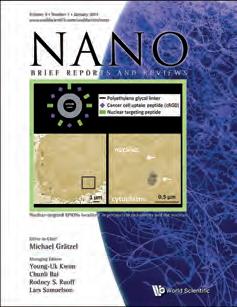

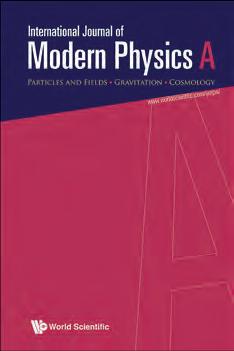



JOURNAL OF MATHEMATICAL LOGIC
https://www.worldscientific.com/jml
Editor-in-Chief
Chitat Chong
National University of Singapore
Theodore A Slaman University of California, Berkeley, USA
W Hugh Woodin
Harvard University, USA
Yue Yang
National University of Singapore
IMPACT FACTOR: 0.9
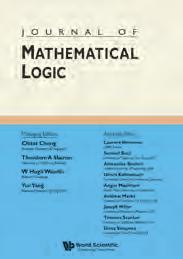
The Journal of Mathematical Logic (JML) provides an important forum for the communication of original contributions in all areas of mathematical logic and its applications. It aims at publishing papers at the highest level of mathematical creativity and sophistication. JML intends to represent the most important and innovative developments in the subject.
https://www.worldscientific.com/vjcs
Open Access
Editor-in-Chief
Ngoc Thanh Nguyen (Wroclaw University of Science and Technology, Poland)
IMPACT FACTOR: 0.6

VJCS strives to cover all aspects of working out new technologies for knowledge engineering, creating intelligent systems and processing data. Papers also highlight advances in use of knowledge engineering technologies and intelligent systems for solving tasks in management, industry, engineering, administration, and education, and evaluations of existing intelligent systems and tools, emphasising comparative studies and user experiences. Papers on key applications, highlighting methods, time schedules and other relevant materials, are welcome. VJCS aims to promote the scientific works of Vietnamese researchers (but not only) in the fields of Computer Science and Information Technology.
https://www.worldscientific.com/wsarai
Editors-in-Chief
Xiaoli Li (Institute for Infocomm Research, and Nanyang Technological University, Singapore)
Co-Editor-in-Chief
Philip S. Yu (University of Illinois at Chicago, USA)

In recent years, Artificial Intelligence has become part of almost every aspect of innovation, ranging from medical research to Internet Of Things (IoT), its development from rule-based systems to deep learning has redefined research and development in many ways. To properly document the landmark development in Artificial Intelligence, this Annual Review aims to invite pioneers and experts in the fourth front of AI research to document and keeps audience updated on the story of this remarkable journey from Chess playing program in the 1950s to today underpinning a spectrum breath-taking innovations.
https://www.worldscientific.com/jus
Editors-in-Chief
Jinwu Gao
Open Access
Ocean University of China, China
Vicenzo Loia
University of Salerno, Italy
Journal of Uncertain Systems (JUS) aims to publish original research related to uncertain systems with mathematical descriptions and applications in engineering, economics, finance, and management sciences. Some typical topics covered by JUS include but are not limited to the following four topics:
1. Uncertain systems related
o Uncertain Statistics
IMPACT FACTOR: 1.4
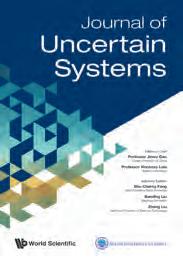
o Uncertain Programming
o Uncertain Logic
o Uncertain Inference
o Uncertain Dynamic Systems
2. Economic, management, and financial systems involving uncertainty
o Supply Chain Management
o Transportation and Logistics
o Economic Models and Policy
o Financial Models and Engineering
o Ocean Economy and Sustainable Development
3. AI, big data techniques and applications
o Data Mining
o Machine Learning
o Deep Learning
o Knowledge Graphs
o Rule-based Systems
4. Decision and control in engineering
o Decision Theory
o Causal Discovery and Inference
o Command and Control
o Systems Engineering
https://www.worldscientific.com/wsards
Editors-in-Chief
Yike Guo (The Hong Kong University of Science and Technology, Hong Kong, China)
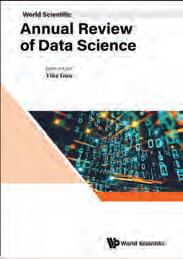
In the era of big data, Data Science is transforming our world and touching our daily lives with its wide applications in healthcare, banking and finance, business, science, and education. It also lays down the foundation of the development of artificial intelligence. This Annual Review of Data Science brings together expert perspectives and reviews on data science advances and challenges. Diverse subjects are addressed including data management governance, data curation, quality assessment and sharing, data analysis, data communication, data visualization, data literacy and education. By drawing the genuine insights and views of a wide range of expertise, the Annual Review aims to promote international exchange of new knowledge and offer readers ideas and inspiration on the key technology underpinning the direction of research in Data Science and a look to future developments.


TITLE AUTHOR AuthorAffl
ALGORITHMS: DESIGN TECHNIQUES AND ANALYSIS
ALSUWAIYEL M H KING FAHD UNIV OF PETROLEUM & MINERALS (KFUPM), SAUDI ARABIA
PUB DATE ISBN13 US$ £
01-Sep-999789810237400155 129
FIRST LOOK AT GRAPH THEORY, A CLARK JOHN & HOLTON DEREK ALLAN UNIV OF OTAGO, NEW ZEALAND 01-May-91 9789810204907(pbk) 4941
FUZZY LOGIC FOR BEGINNERS MUKAIDONO MASAOMEIJI UNIV, JAPAN 13-Feb-01 9789810245344(pbk) 2823
INTRODUCTION TO GENETIC ALGORITHMS FOR SCIENTISTS AND ENGINEERS, AN
GENERAL SYSTEMS THEORY: PROBLEMS, PERSPECTIVES, PRACTICE (SECOND EDITION)
COLEY DAVID A UNIV OF EXETER, UK 02-Feb-9997898102360214941
SKYTTNER LARS UNIV OF GAVLE, SWEDEN 05-Jan-06 9789812564672(pbk) 120 100
SOFTWARE MAINTENANCE: CONCEPTS AND PRACTICE (SECOND EDITION) GRUBB PENNY & TAKANG ARMSTRONG A UNIV OF HULL, UK 09-Jul-03 9789812384263(pbk) 7764
PRINCIPLES OF QUANTUM COMPUTATION AND INFORMATIONVOLUME I: BASIC CONCEPTS
POWER OF COMPUTATIONAL THINKING, THE: GAMES, MAGIC AND PUZZLES TO HELP YOU BECOME A COMPUTATIONAL THINKER
INTRODUCTION TO QUANTUM COMPUTERS
INCLUSIVE FINTECH: BLOCKCHAIN, CRYPTOCURRENCY AND ICO
VLSI PHYSICAL DESIGN AUTOMATION: THEORY AND PRACTICE
BENENTI GIULIANO ET ALUNIV DEGLI STUDI DELL’ INSUBRIA, ITALY & INSTITUTO NAZIONALE PER LA FISICA DELLA MATERIA, ITALY 19-Apr-04 9789812388582(pbk) 5848
MCOWAN PETER WILLIAM & CURZON PAUL
QUEEN MARY UNIV OF LONDON, UK 18-Jan-17 9781786341846(pbk) 2420
BERMAN GENNADY P ET AL LOS ALAMOS NATIONAL LAB, USA 08-Jul-98 9789810235499(pbk) 3832
DAVID LEE KUO CHUEN & LINDA LOW S’PORE UNIV OF SOCIAL SCIENCES, S’PORE 22-Jun-18 9789813272767(pbk) 4845
SAIT SADIQ M & YOUSSEF HABIB KING FAHD UNIV OF PETROLEUM & MINERALS (KFUPM), SAUDI ARABIA 04-Oct-999789810238834129 107
IMPOSSIBLE MINDS: MY NEURONS, MY CONSCIOUSNESS ALEKSANDER I IMPERIAL COLLEGE, UK 30-Sep-9697818609403094235
FIRST LOOK AT RIGOROUS PROBABILITY THEORY, A
3D PRINTING AND ADDITIVE MANUFACTURING: PRINCIPLES AND APPLICATIONS - FIFTH EDITION OF RAPID PROTOTYPING
COMPUTABILITY THEORY AND FOUNDATIONS OF MATHEMATICS - PROCEEDINGS OF THE 9TH INTERNATIONAL CONFERENCE ON COMPUTABILITY THEORY AND FOUNDATIONS OF MATHEMATICS
MACHINE LEARNING, MULTI AGENT AND CYBER PHYSICAL SYSTEMS - PROCEEDINGS OF THE 15TH INTERNATIONAL FLINS CONFERENCE (FLINS 2022)
INFINITE DIMENSIONAL ANALYSIS, QUANTUM PROBABILITY AND RELATED TOPICS, QP38 - PROCEEDINGS OF THE INTERNATIONAL CONFERENCE
DIGITAL ECONOMY AND COMPUTER APPLICATIONS - PROCEEDINGS OF THE 2ND INTERNATIONAL CONFERENCE
ECONOMIC MANAGEMENT AND BIG DATA APPLICATION - PROCEEDINGS OF THE 3RD INTERNATIONAL CONFERENCE
ROSENTHAL JEFFREY S UNIV TORONTO, CANADA 20-Apr-00 9789810243227(pbk) 2722
CHUA CHEE KAI & LEONG KAH FAI NTU, S’PORE 30-Nov-16 9789813146761(pbk) 5848
PENG NINGNING ET AL
WUHAN UNIV OF TEHCNOLOGY, CHINA
SUN QINGLIN ET AL NANKAI UNIV, CHINA
WATANABE NOBORU ET AL
TOKYO UNIV OF SCIENCE, JAPAN
20-May-229789811259289
20-Dec-229789811269257
30-Apr-239789811275982 9789811275999
MANICKAM SELVAKUMAR UNIV SAINS MALAYSIA, MALAYSIA 31-Jul-239789811270291
QALATI SIKANDAR ALI JIANGSU UNIV, CHINA 31-Jul-239789811270260


APPLICATIONS, ARCHITECTURE AND SECURITY FOR THE “INTERNET OF THINGS”
ONLINE PROPAGANDA AND MISINFORMATION
DIFFERENTIAL GEOMETRICAL FOUNDATIONS OF INFORMATION GEOMETRY: GEOMETRY OF STATISTICAL MANIFOLDS AND DIVERGENCES
DISTRIBUTED INTELLIGENT CIRCUITS AND SYSTEMS
DYNAMIC DATA-DRIVEN SIMULATION: REAL-TIME DATA FOR DYNAMIC SYSTEM ANALYSIS AND PREDICTION
ECONOMIC MANAGEMENT AND BIG DATA APPLICATION –PROCEEDINGS OF THE 3RD INTERNATIONAL CONFERENCE
EMERGING TOPICS IN PATTERN RECOGNITION AND ARTIFICIAL INTELLIGENCE
FAIR EXCHANGE: THEORY AND PRACTICE
Top Computer Science Publishing Programme with Renowned
Authors in various fields including Artificial Intelligence, Computer Vision, Databases, Digital Security, Fuzzy Logic, General Computer Science, Image Analysis, Information Sciences, Machine Learning, Machine Perception, Neural Networks, Networking, Parallel Computing, Pattern Recognition, Robotics and Automated Systems, Supercomputing, Software Engineering, Programming and Theoretical Computer Science. From an independent publisher of Leading Thinkers in Computer
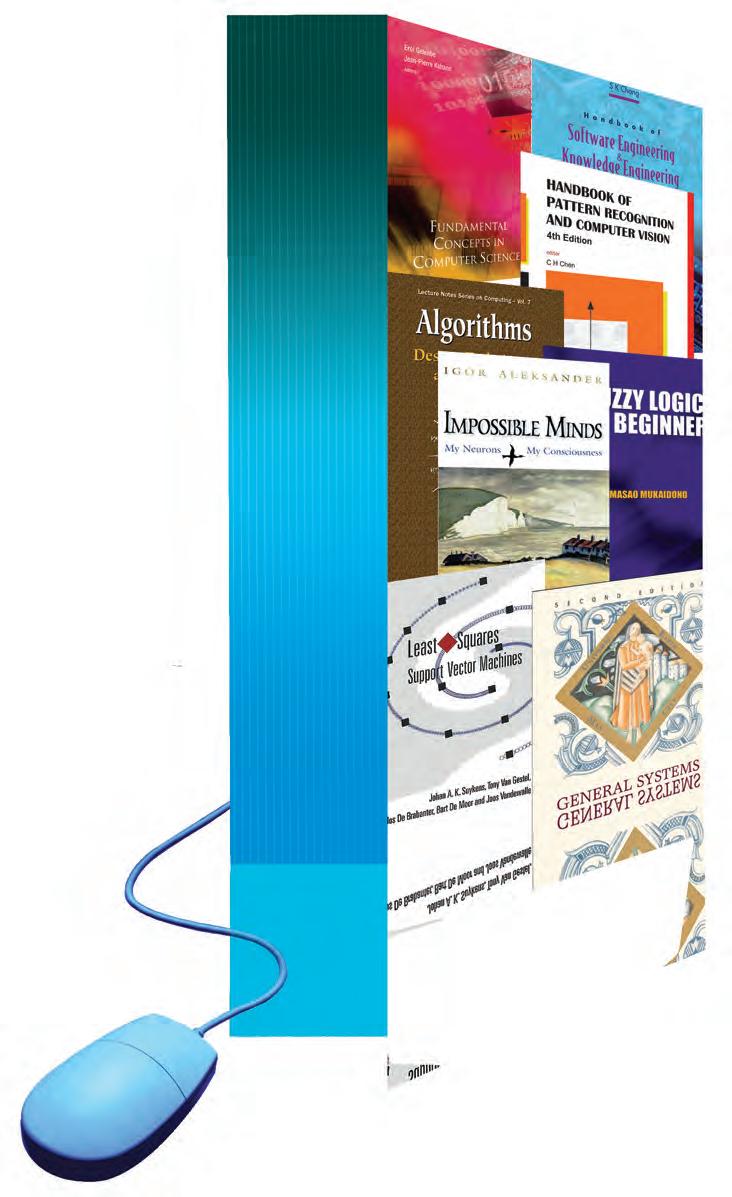
Highly Recommended and Bestselling Computer Science Titles Specially Tailored For Your Scholarly Needs.

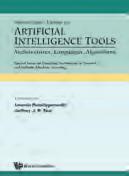
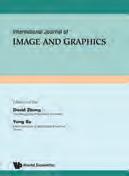
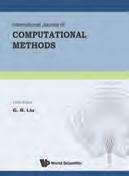
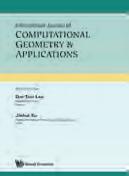
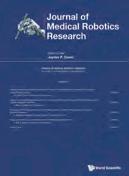
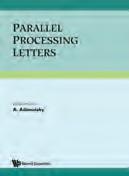
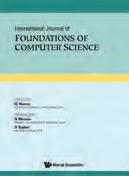
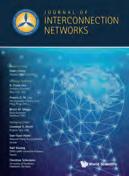

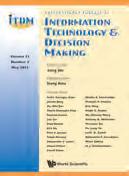
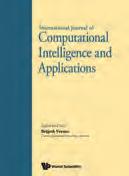
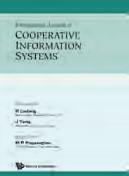
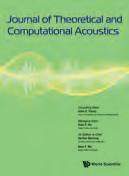
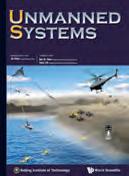
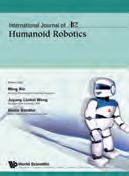


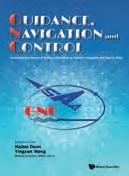
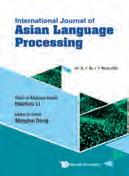

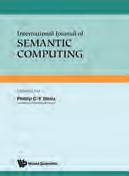
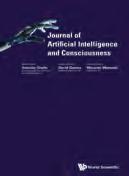
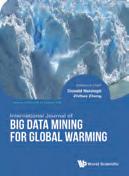
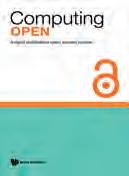

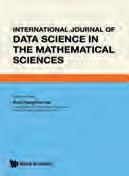
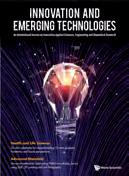
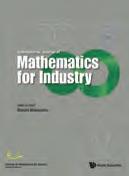

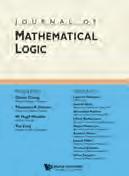
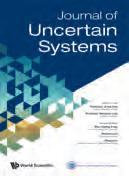

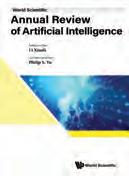
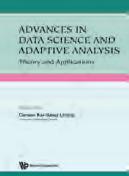



• NEW JERSEY World Scientific Publishing Co. Inc., 27 Warren Street, Suite 401-402, Hackensack, NJ 07601, USA Fax: +1-201-487-9656 Tel: +1-201-487-9655 Email: wspc_us@wspc.com
• LONDON World Scientific Publishing (UK) Ltd., 57 Shelton Street, Covent Garden, London WC2H 9HE, UK Tel: +44 020 7836 0888 Email: sales@wspc.co.uk
• SINGAPORE World Scientific Publishing Co., Pte. Ltd., 5 Toh Tuck Link, SINGAPORE 596224 Tel: +65 6466 5775 Email: sales@wspc.com
• BEIJING World Scientific Publishing (Beijing), B1505, Caizhi International Building, No 18 Zhongguancun East Road, Haidian District, Beijing 100083, P R OF CHINA Tel/Fax: +86 10 8260 1201 Email: wspbj@wspc.com
• SHANGHAI Global Consultancy (Shanghai) Pte. Ltd., Shanghai Bund International Tower, No. 99, Huangpu Road, Room 2003, Shanghai 200080, P R OF CHINA Fax: +86 21 6325 4985 Tel: +86 21 6325 4982 Email: wspsh@wspc.com
• HONG KONG World Scientific Publishing (HK) Co. Ltd., Email: wsphk@wspc.com
• TAIPEI World Scientific Publishing Co. Pte. Ltd., 8F, No.162, Sec 4, Roosevelt Road, Taipei 10091, TAIWAN (ROC) Fax: +886 2 2366 0460 Tel: +886 2 2369 1366 Email: wsptw@wspc.com
• CHENNAI World Scientific Publishing Co. Pte. Ltd., No. 16 South West Boag Road, T. Nagar, Chennai 600017, INDIA Tel / Fax: 91-44-52065464 Email: mkt@wspc.com